With the Pop series, Fractal Design is targeting the entry-level segment and is diversifying the product range very broadly with three variants and three designs. The choice is not only between silent and air, but also between warm and cold.
Table of contents
- 1 Broad, solid case series leaves a lot of choice
- Upscale entry with numerous offshoots
- The differences between Pop Air and Pop Silent
- The case in detail
- Installation and everyday experiences
- 2 test results, measured values and conclusion
- Test system and methodology
- Volume when idle and in games< /li>
- CPU, VRM, SSD and RAM temperature
- GPU temperature and fan speed
- Measured values compared to other cases
- Conclusion< /li>
Elevated entry with numerous offshoots
The recently presented Pop series coexists with the Core and Focus 2 product lines, which are also in the entry-level segment. With eleven offshoots and some bright color choices, Fractal Design serves up more lavishly in the Pop series.
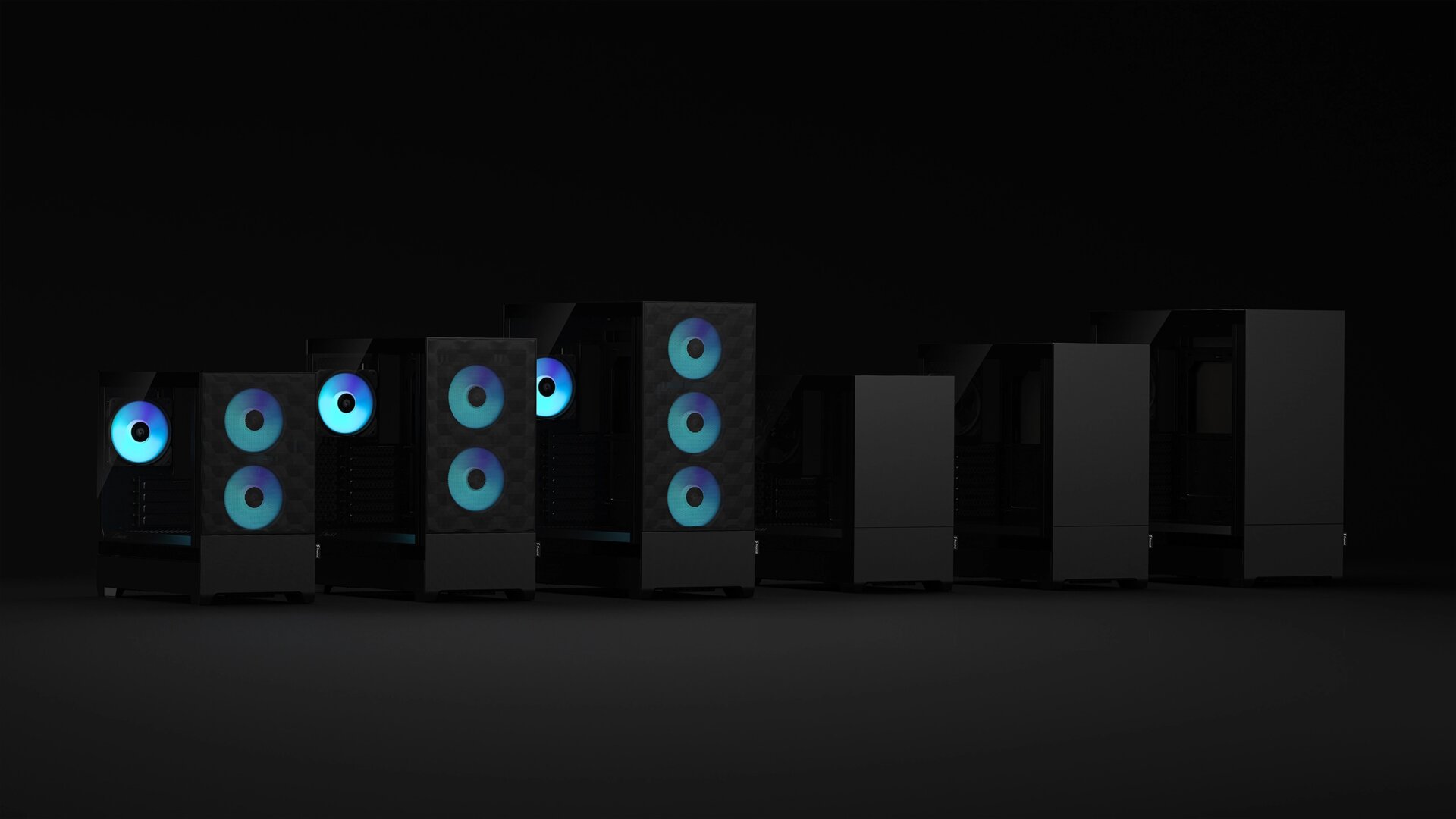 Fractal Design Pop im Test (Image: Fractal Design)
Fractal Design Pop im Test (Image: Fractal Design)The manufacturer divides the portfolio into a mini, a standard and an XL variant in terms of case size. Silent, Air and Air RGB offshoots are available in each size category, each with and without a glass side element.
Black with Cyan
Black with Magenta
Black with Green
Black with Orange €94.99 €113/€104
€105
€95
€94
€109
Fractal Design Pop XL, Silent Solid Black €105.99 €101 Fractal Design Pop XL, Silent TG Black €105.99 €101 Fractal Design Pop XL, Air RGB TG Black, White €114.99 €105/€129
The differences between Pop Air and Pop Silent
With so many offshoots, the question of the differences also arises – especially in terms of temperature. In particular, to find out the latter, this case test is dedicated to the offshoots Pop Air (Solid) and Pop Silent (Solid). Although both models are based on the same body, they differ significantly in terms of ventilation. The other respective differences are to be applied analogously to the other housing offshoots.
-
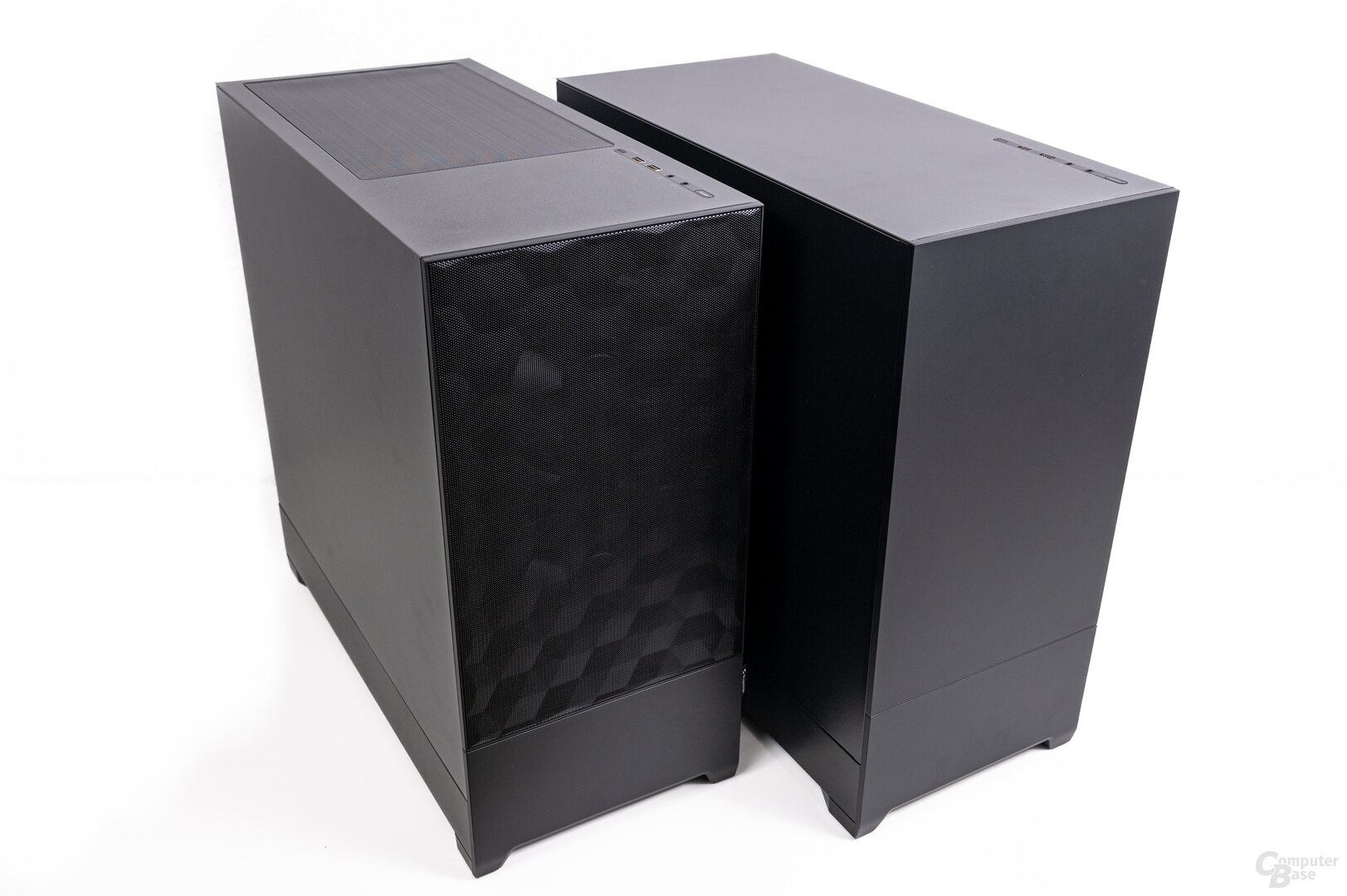 Fractal Design Pop tested: Air and Silent offshoots
Fractal Design Pop tested: Air and Silent offshoots
< /ol> Image 1 of 12
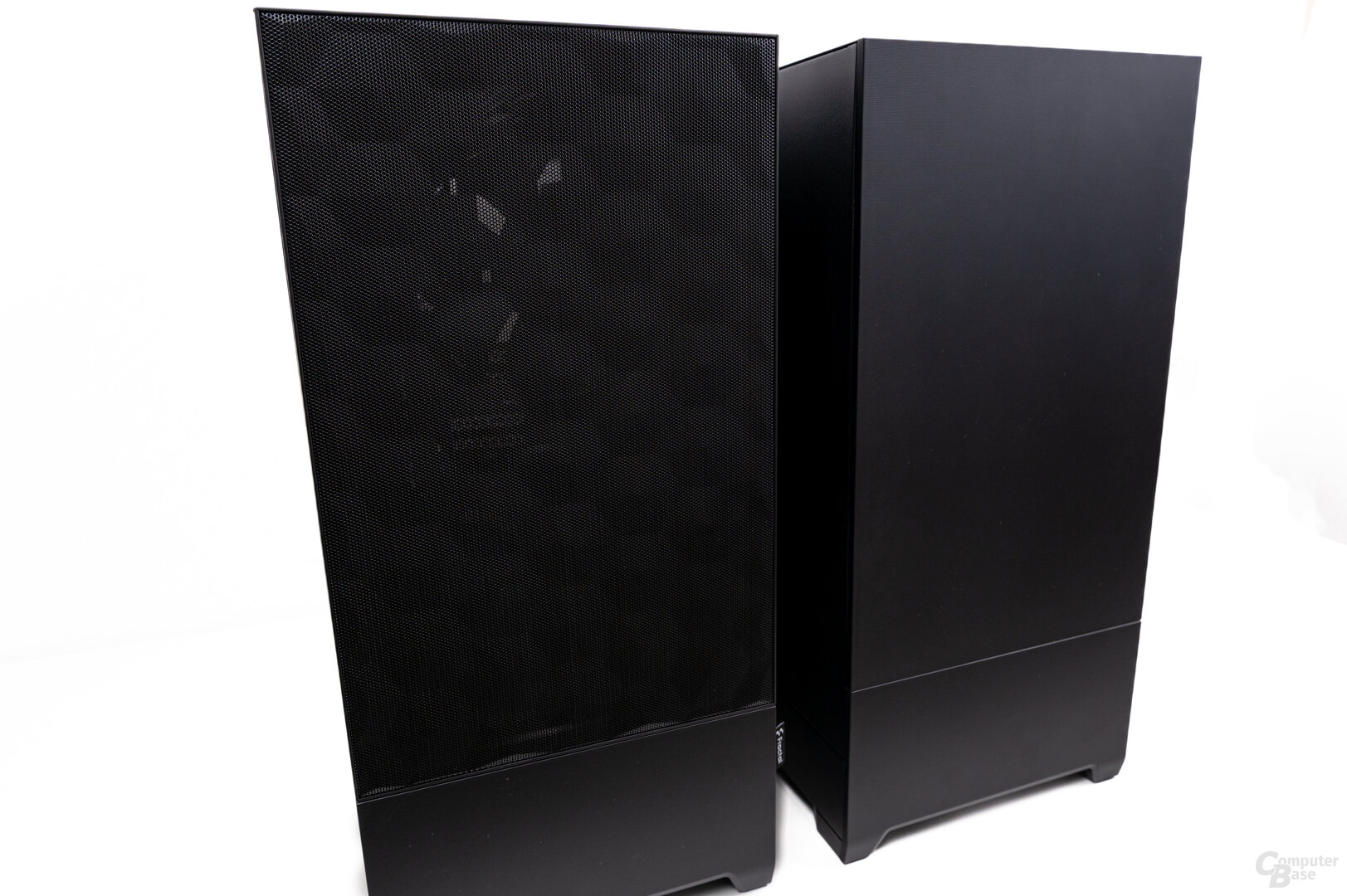 Fractal Design Pop tested: Air and Silent offshoots
Fractal Design Pop tested: Air and Silent offshoots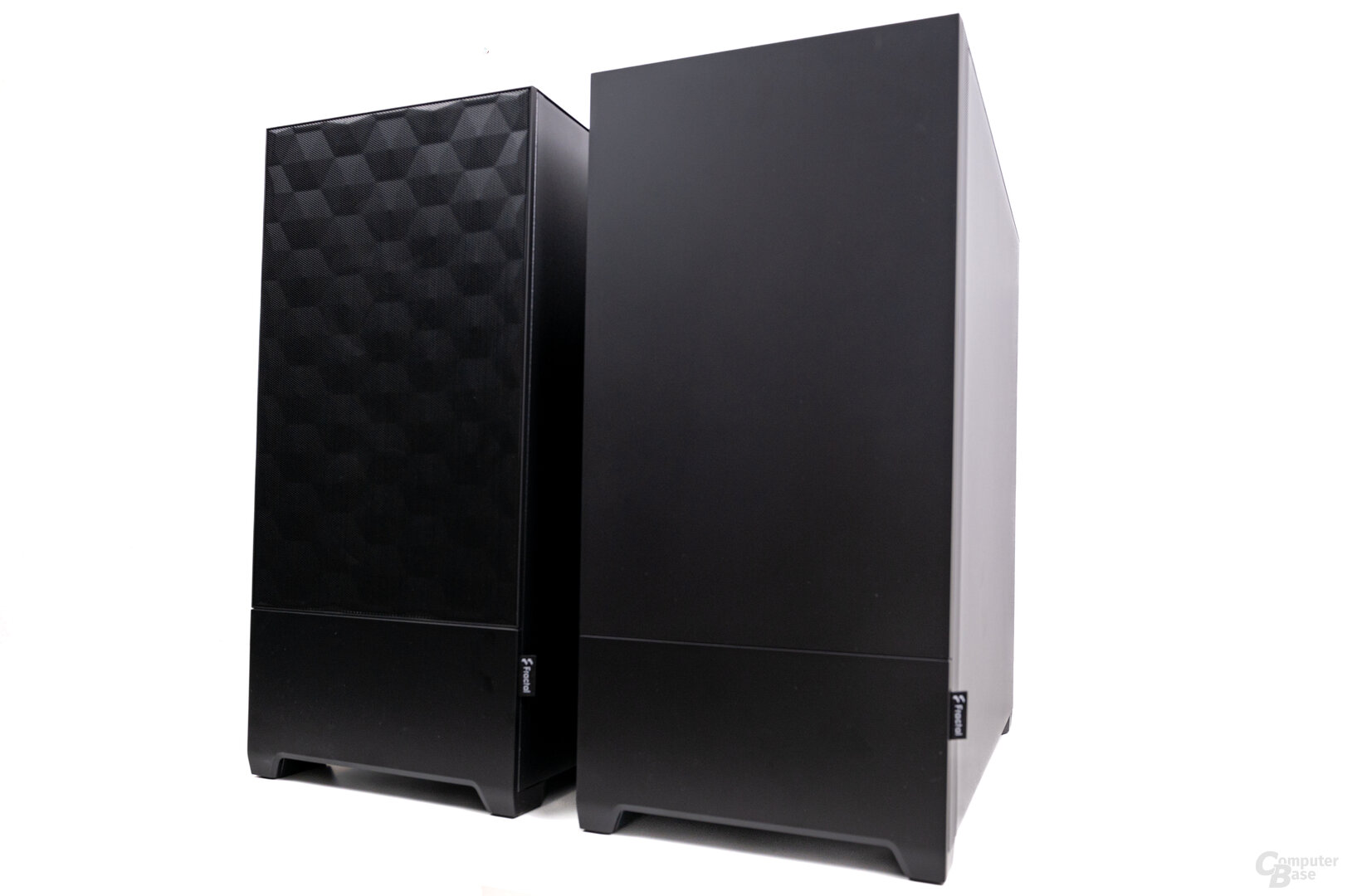 Fractal Design Pop tested: Air and Silent offshoots
Fractal Design Pop tested: Air and Silent offshoots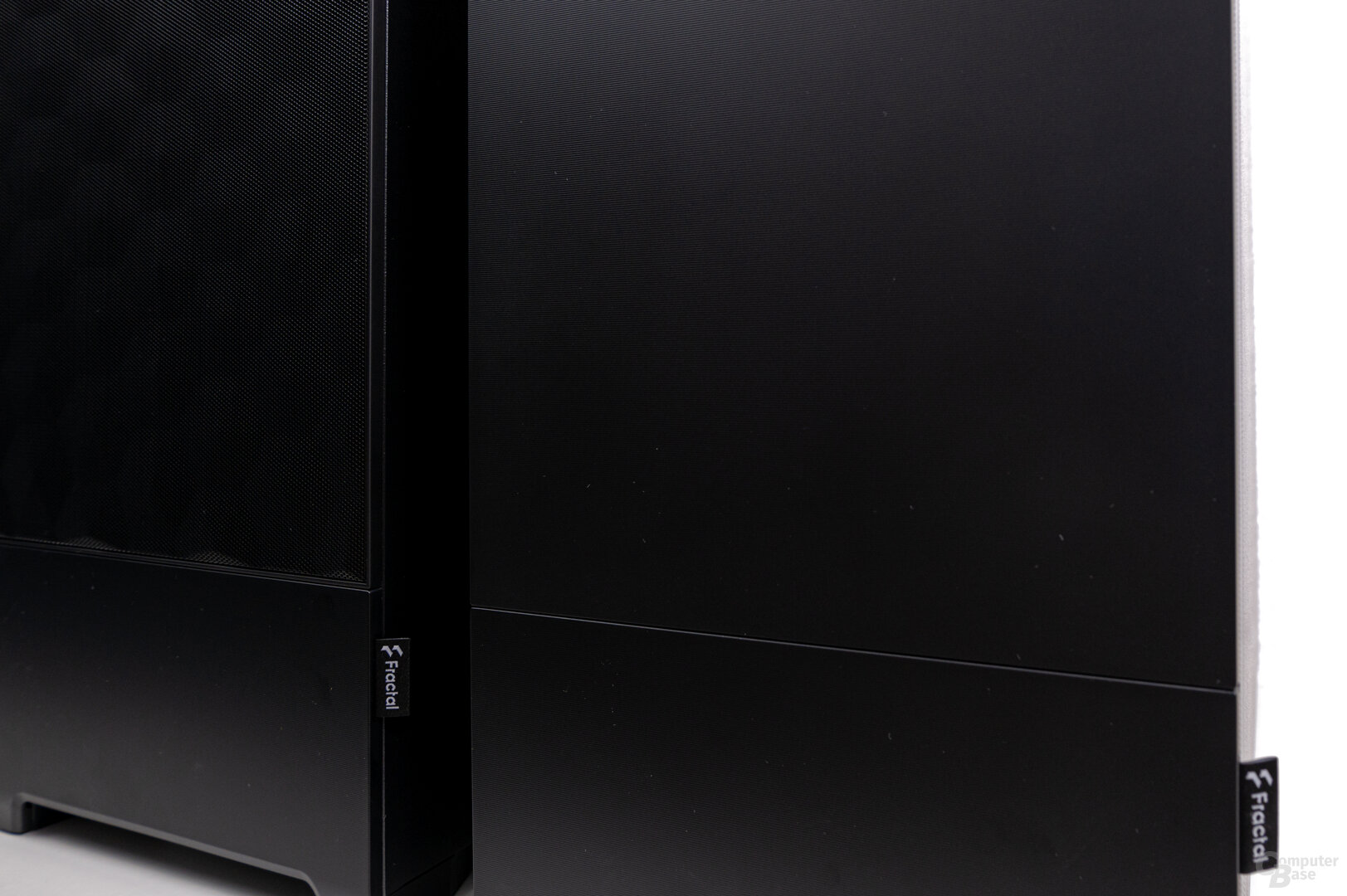 Fractal Design Pop tested: Air and Silent offshoots
Fractal Design Pop tested: Air and Silent offshoots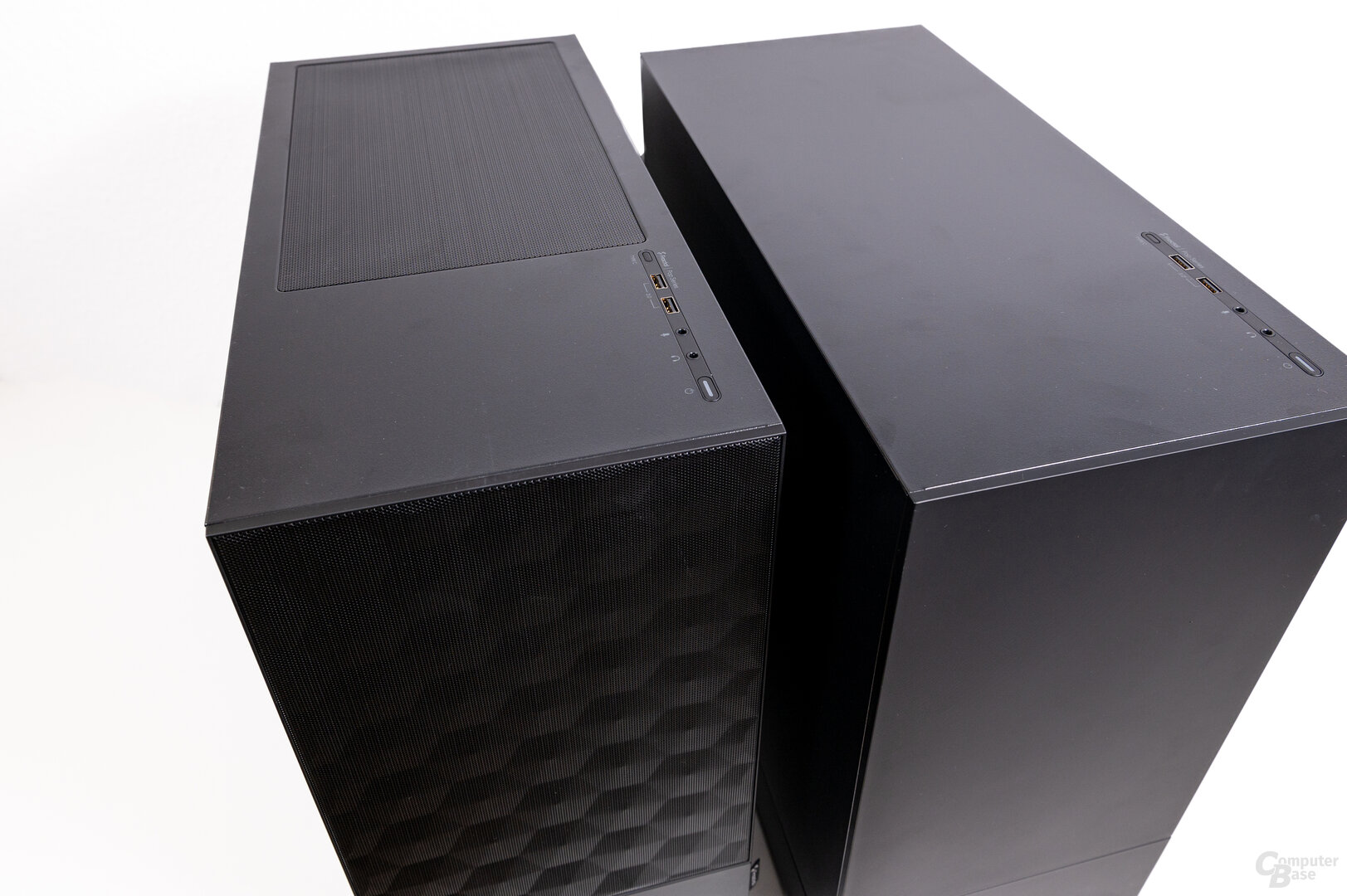 Fractal Design Pop tested: Air and Silent offshoots
Fractal Design Pop tested: Air and Silent offshoots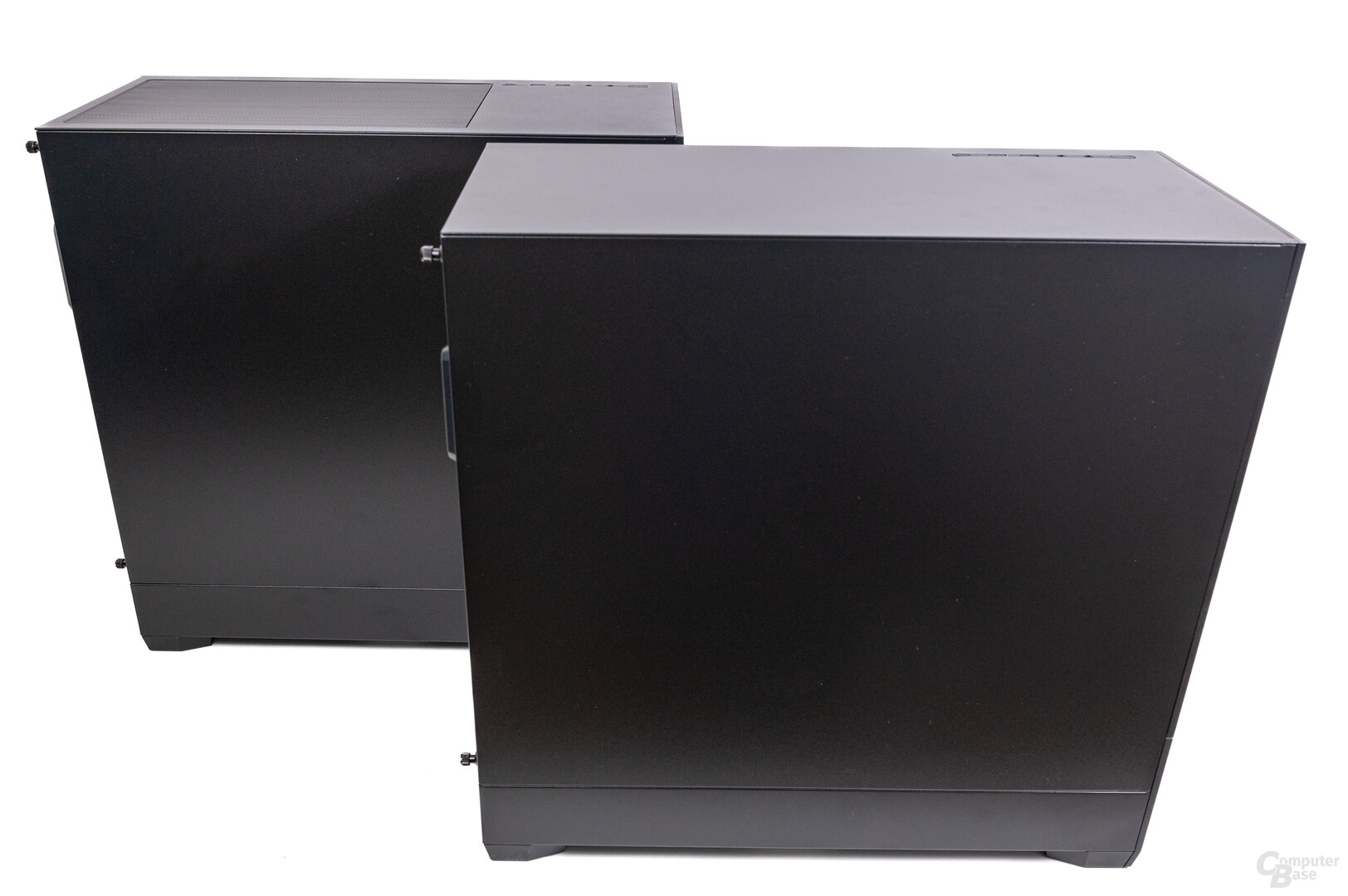 Fractal Design Pop tested: Air and Silent offshoots
Fractal Design Pop tested: Air and Silent offshoots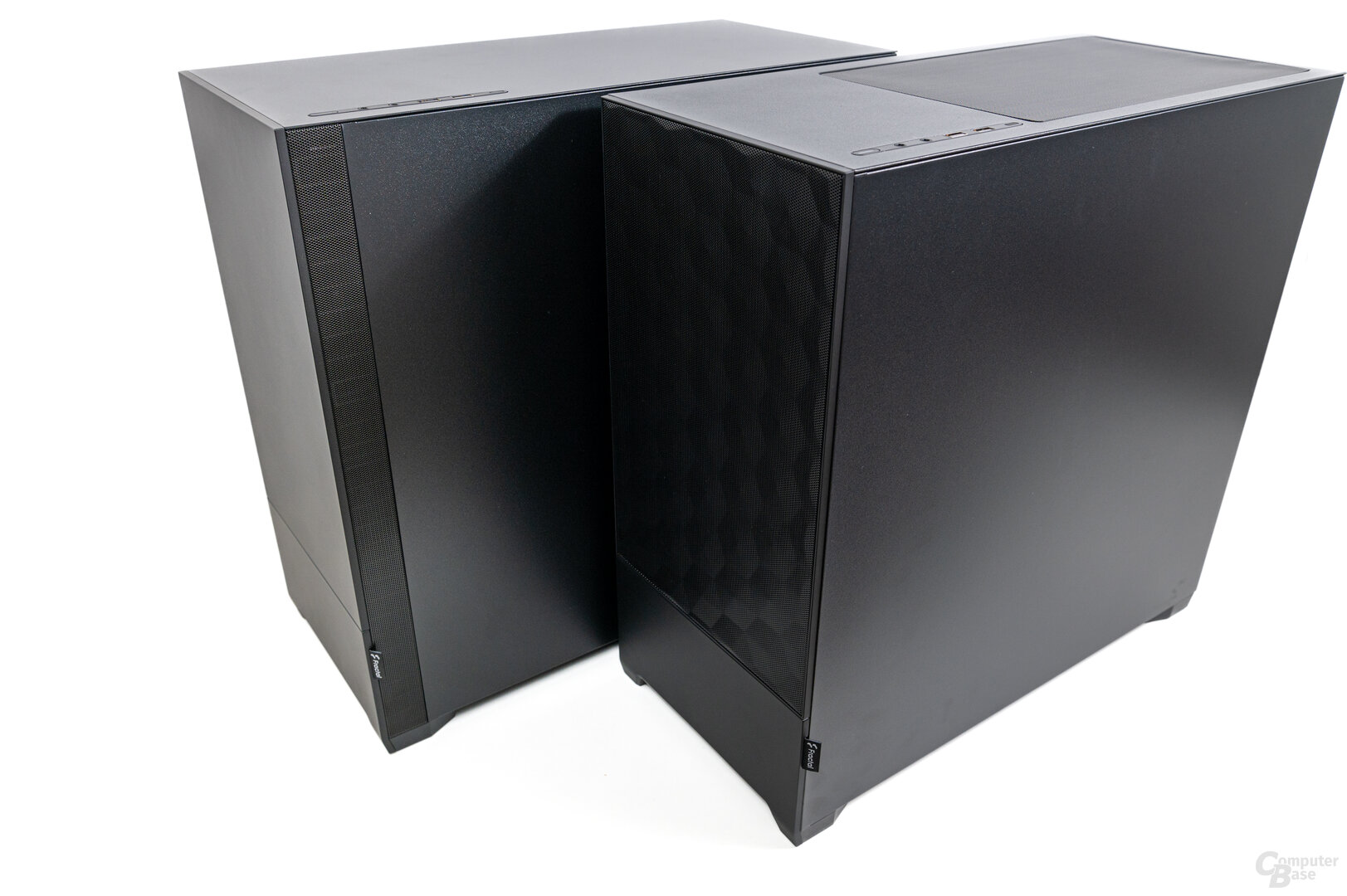 Fractal Design Pop in test: Narrow ventilation slit in the Pop Silent
Fractal Design Pop in test: Narrow ventilation slit in the Pop Silent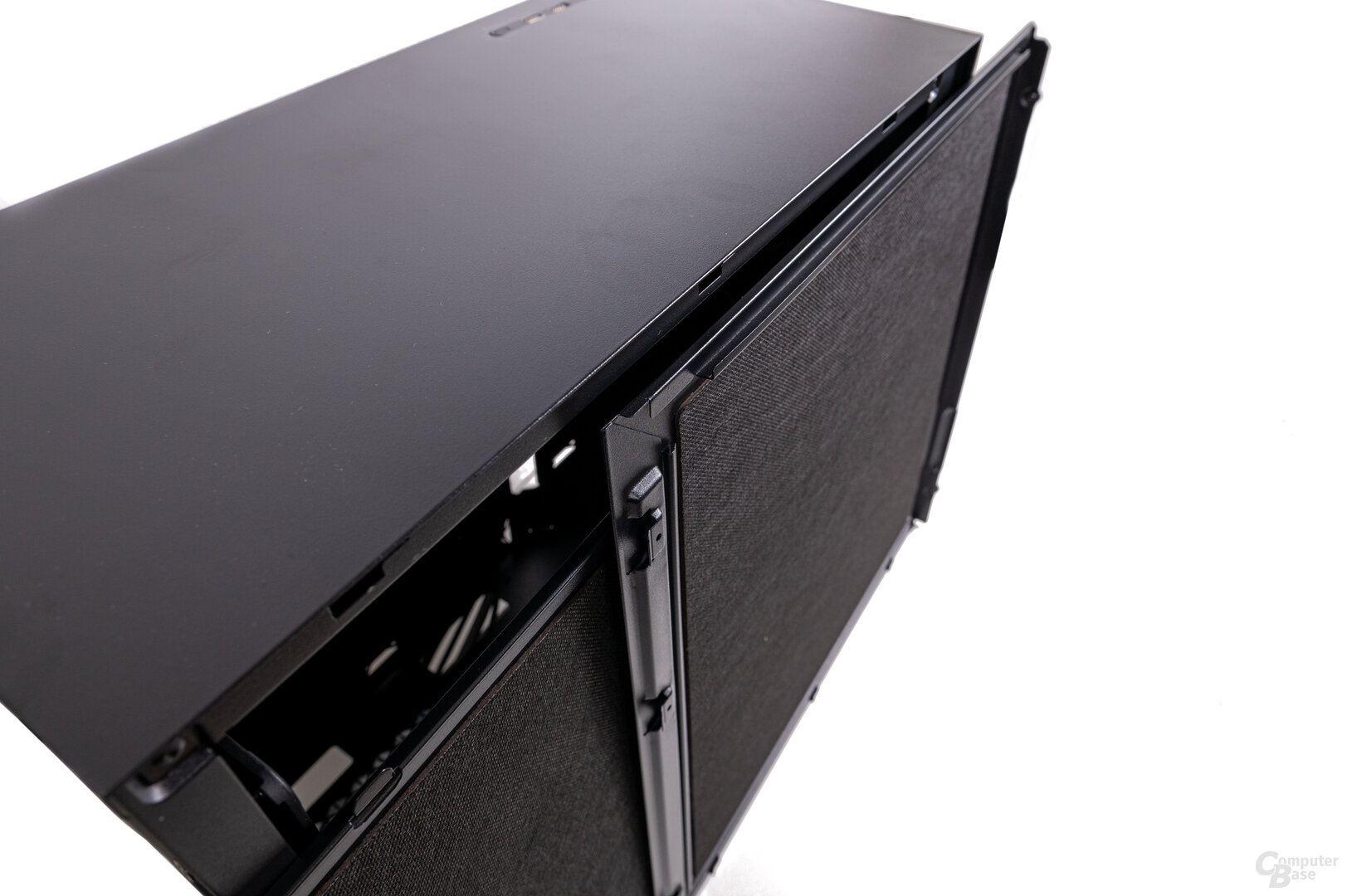 Fractal Design Pop on test: The Pop Silent offers insulation
Fractal Design Pop on test: The Pop Silent offers insulation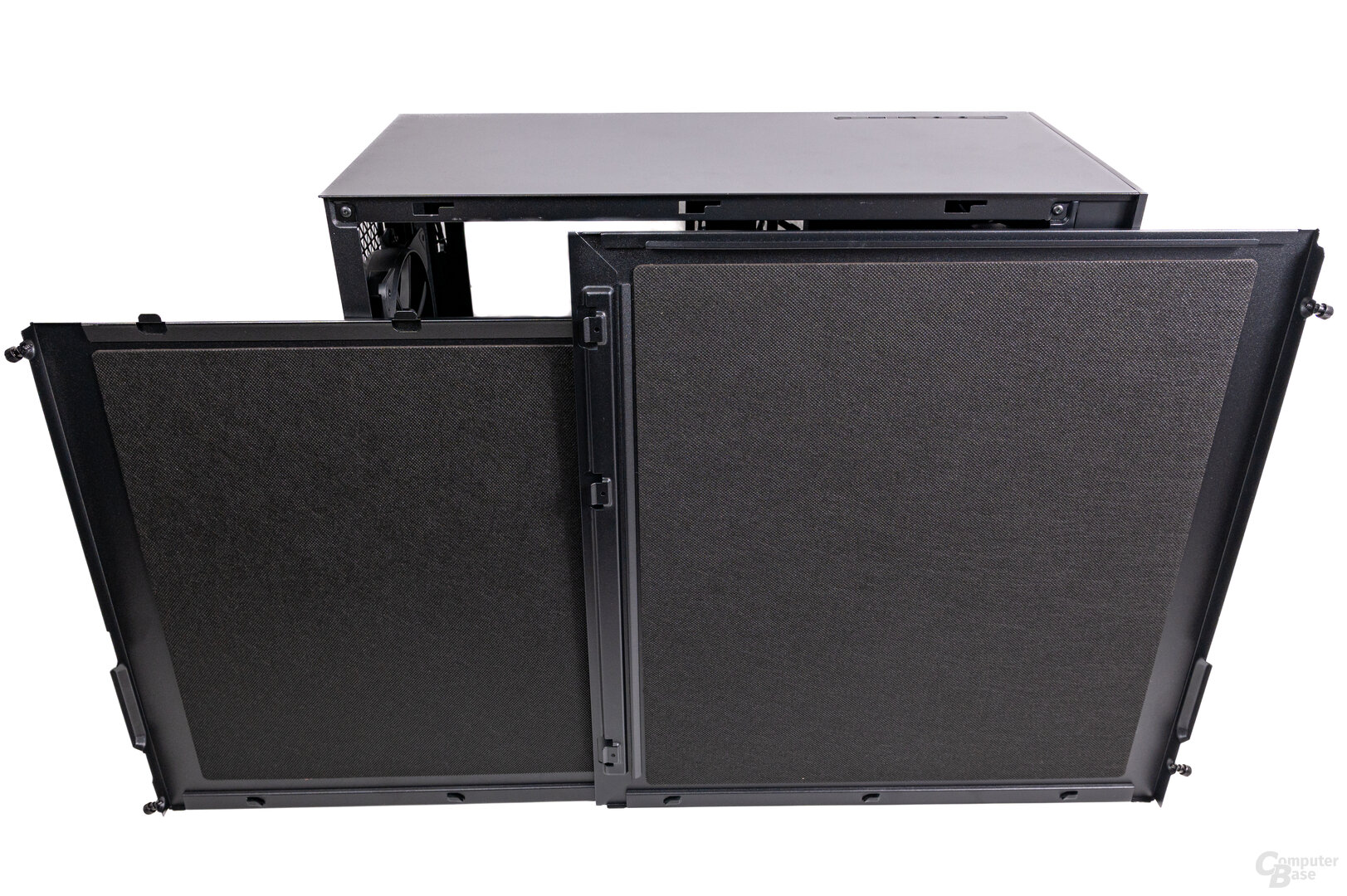 Fractal Design Pop on test: The Pop Silent offers insulation
Fractal Design Pop on test: The Pop Silent offers insulation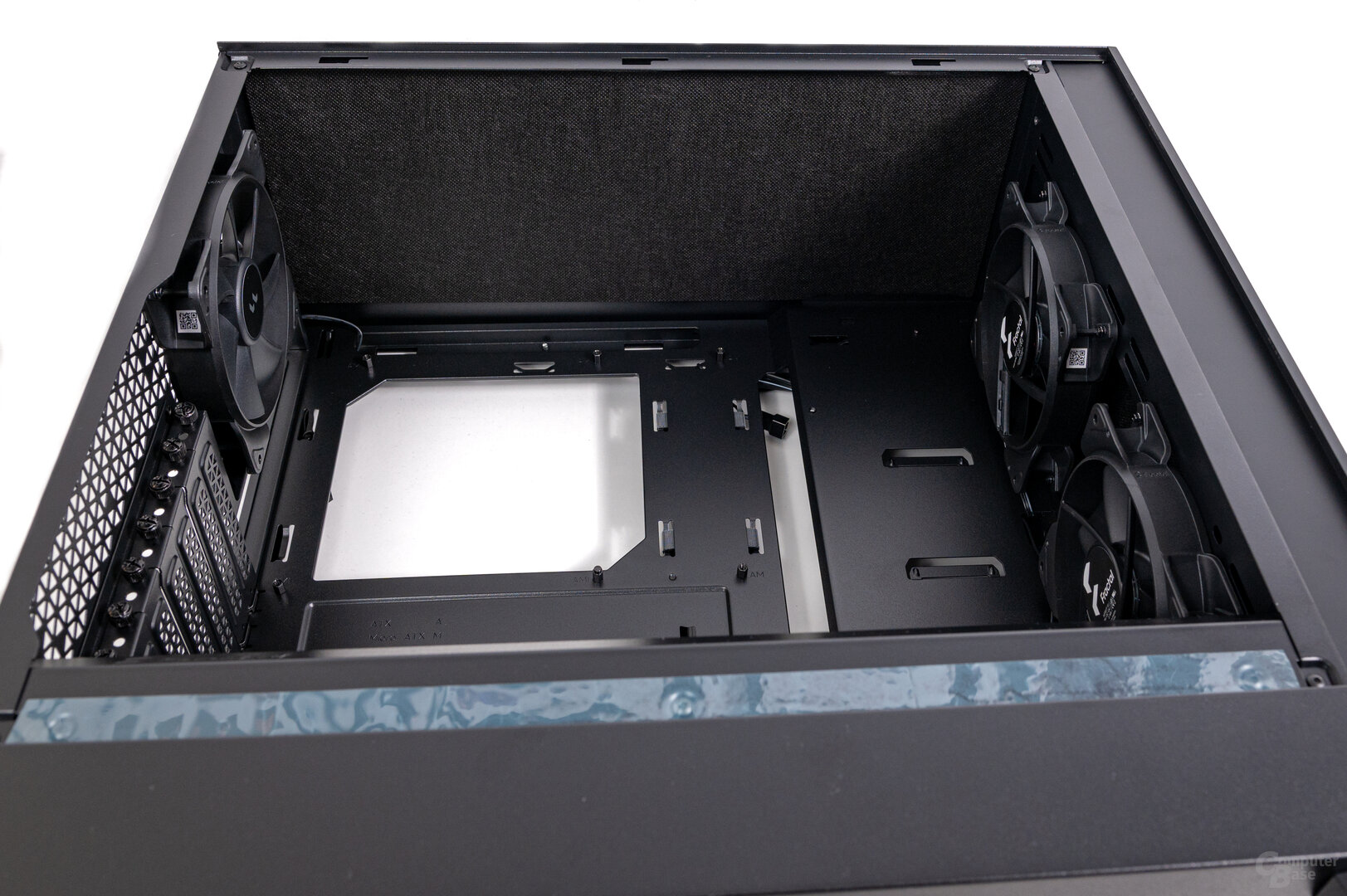 Fractal Design Pop on test: The Pop Silent offers insulation
Fractal Design Pop on test: The Pop Silent offers insulation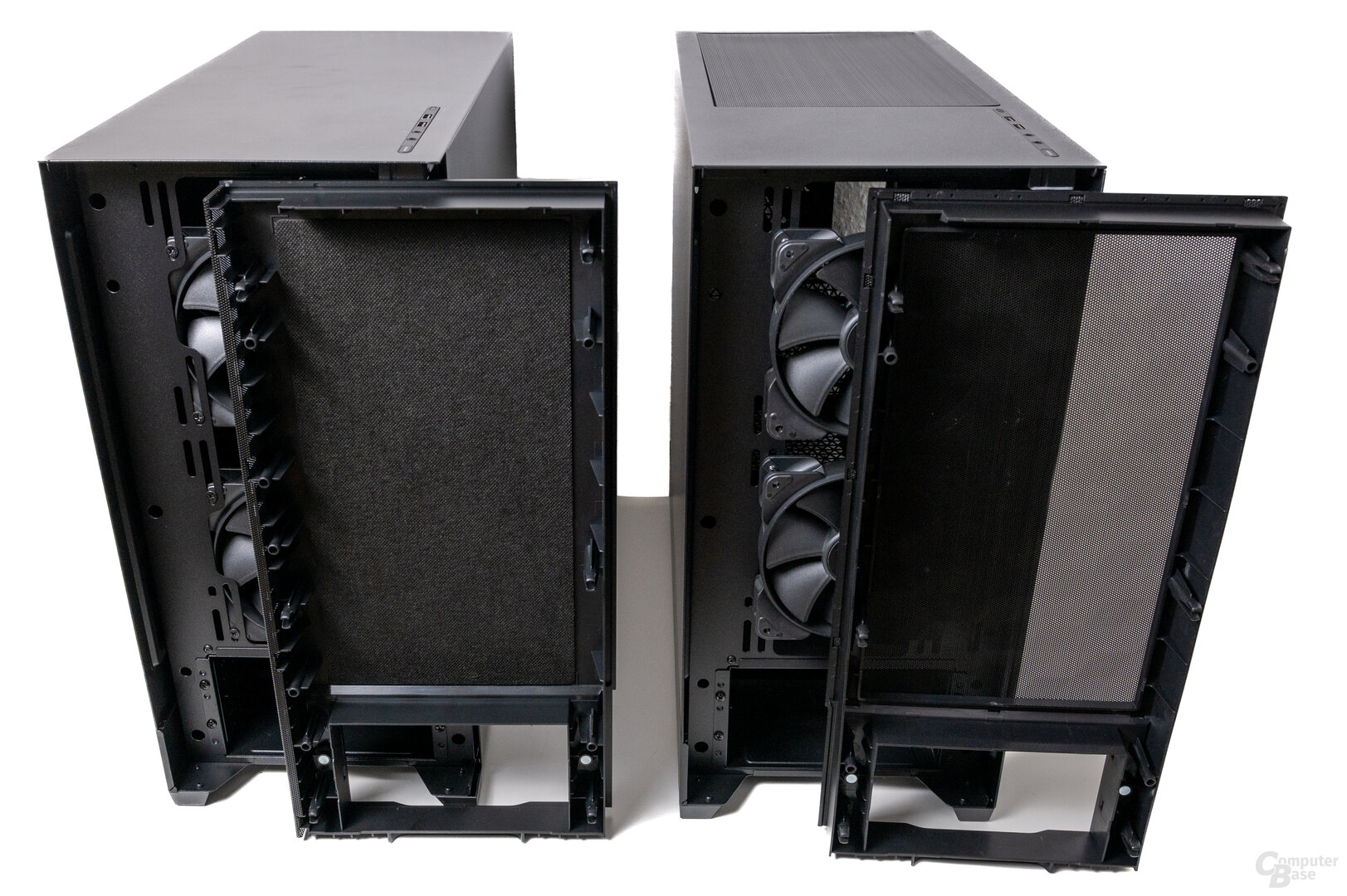 Fractal Design Pop Review: Front Elements Compared
Fractal Design Pop Review: Front Elements Compared< p class="p text-width">The external differences between the two cases are immediately apparent. While the Silent variant relies on a closed front, the Air offshoot comes with a large perforated grille in a honeycomb pattern, which does without a dust filter for a better supply of fresh air. The Pop Air also has air inlets in the lid, whereas fresh air is only supplied to the Silent model via a narrow strip on the right side of the case. In return, the Pop Silent comes up with sound insulation in the front element, in the lid and on the two side parts.
The case in detail
The processing quality is impeccable across the board, so that the budget orientation of the case series does not lead to any mistakes here. There are no sharp edges or conspicuous gaps on either of the test subjects. However, due to the cost, the materials used are limited to fairly thin sheet steel and plastic. Nevertheless, the cases Pop Air and Pop Silent have an extremely good torsional rigidity. The body relies on many rivet points for this, all of which are well made. The side panels are double-shod, which increases rigidity. This is further reinforced by the insulating mats with the silent offshoot.
-
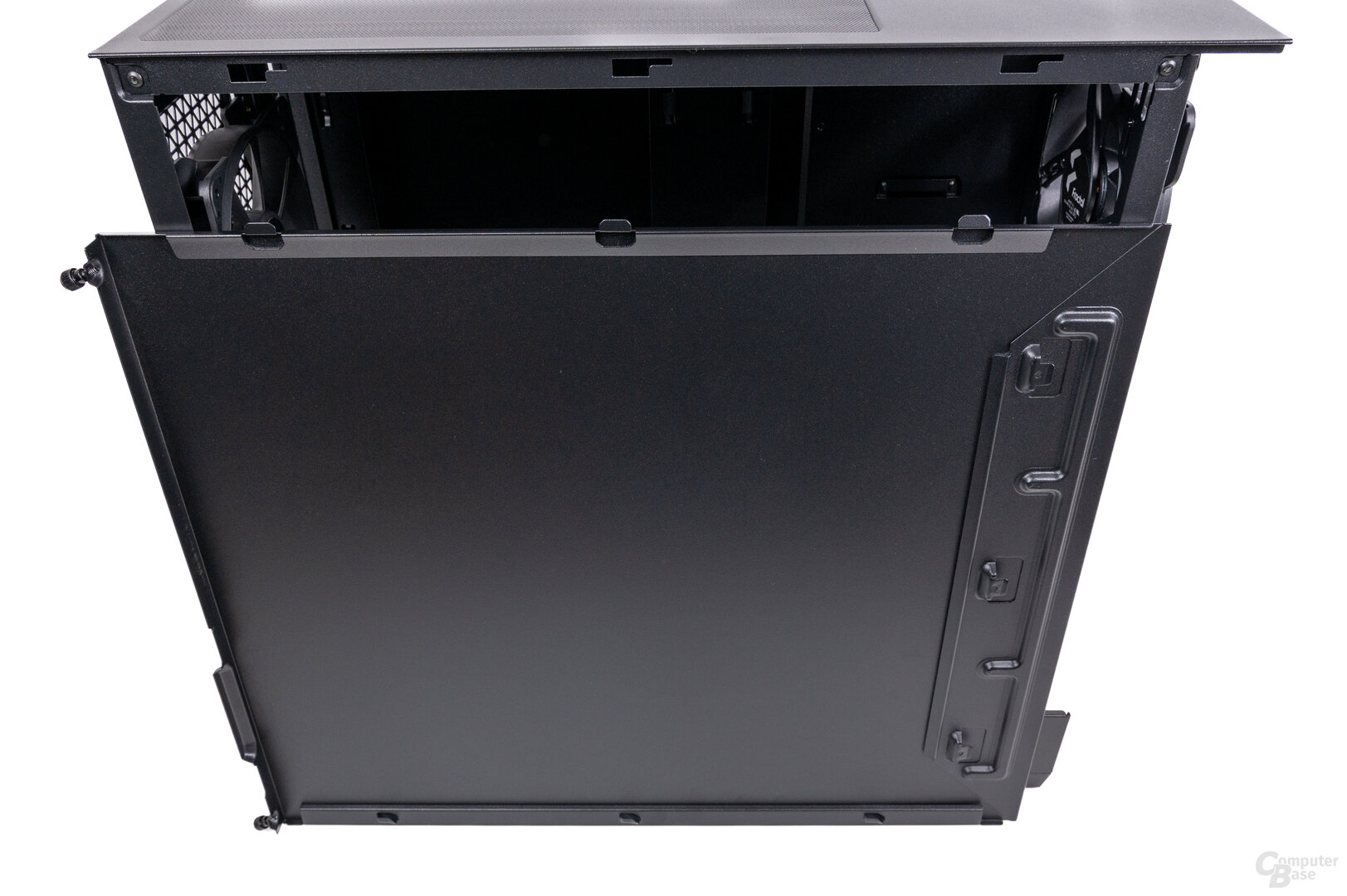 Fractal Design Pop in test: high torsional rigidity
Fractal Design Pop in test: high torsional rigidity
picture 1 of 9
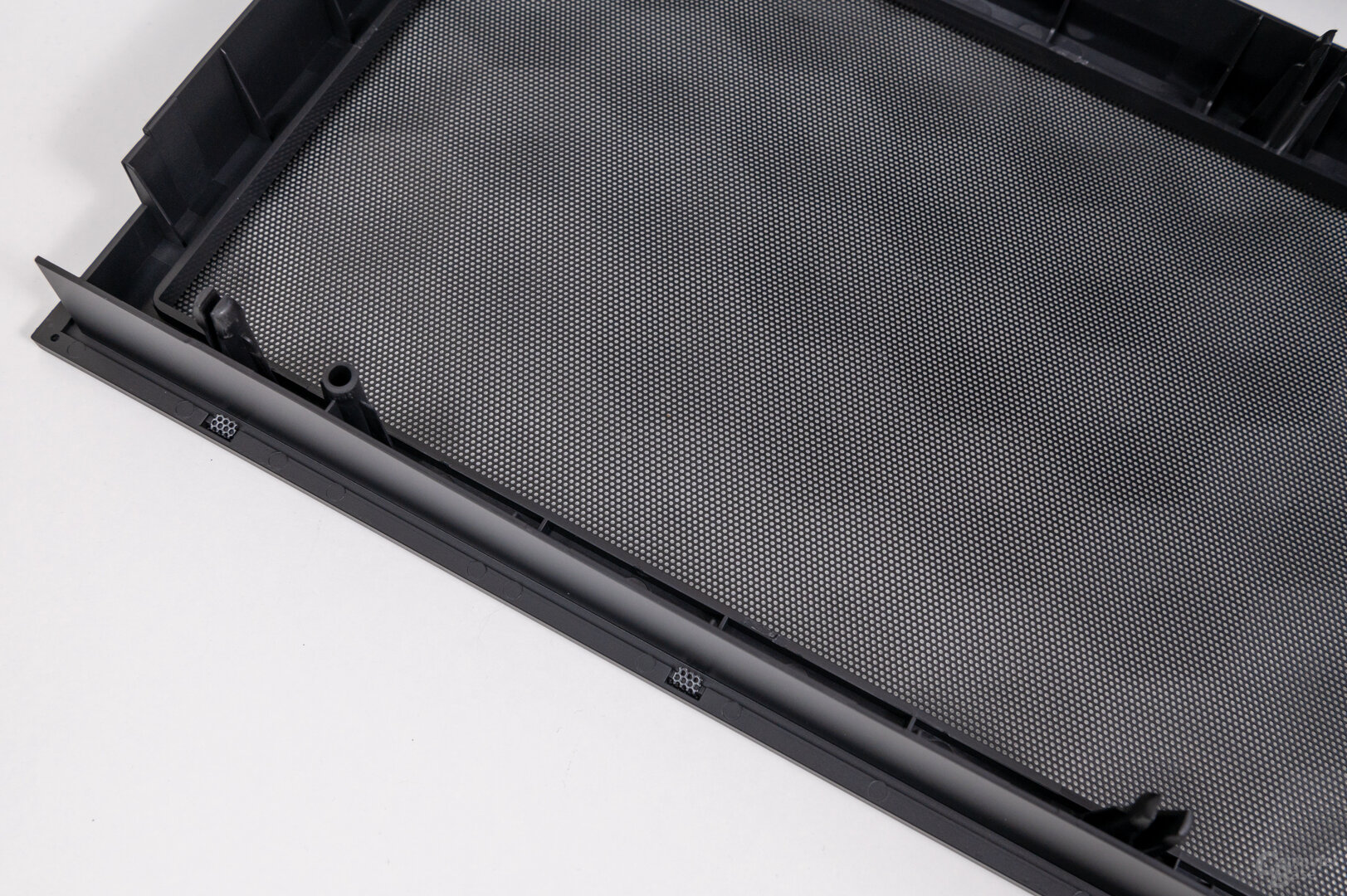 Fractal Design Pop in the test: No sharp edges on the mesh flaps
Fractal Design Pop in the test: No sharp edges on the mesh flaps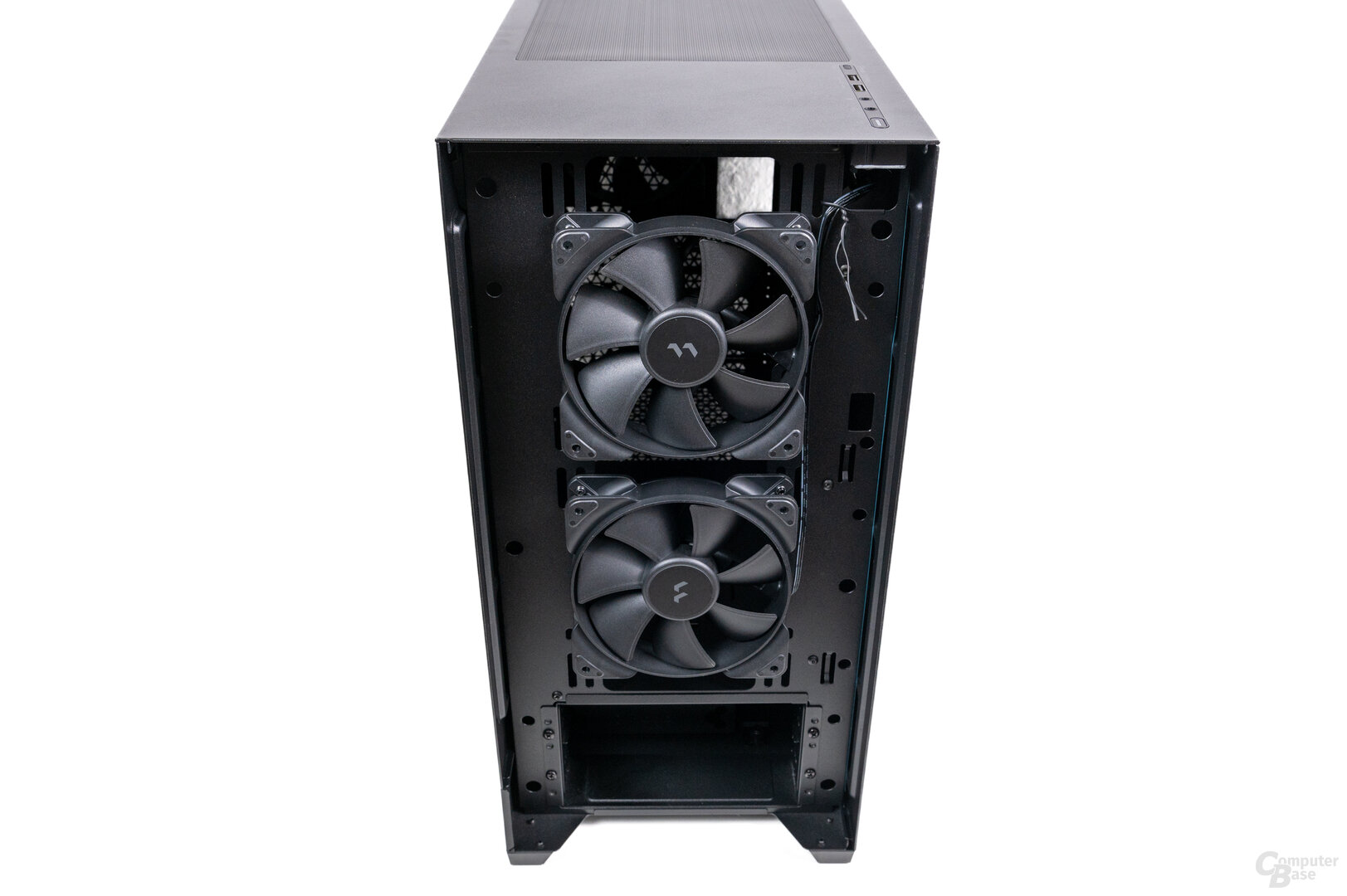 Testing Fractal Design Pop
Testing Fractal Design Pop Fractal Design Pop Review
Fractal Design Pop Review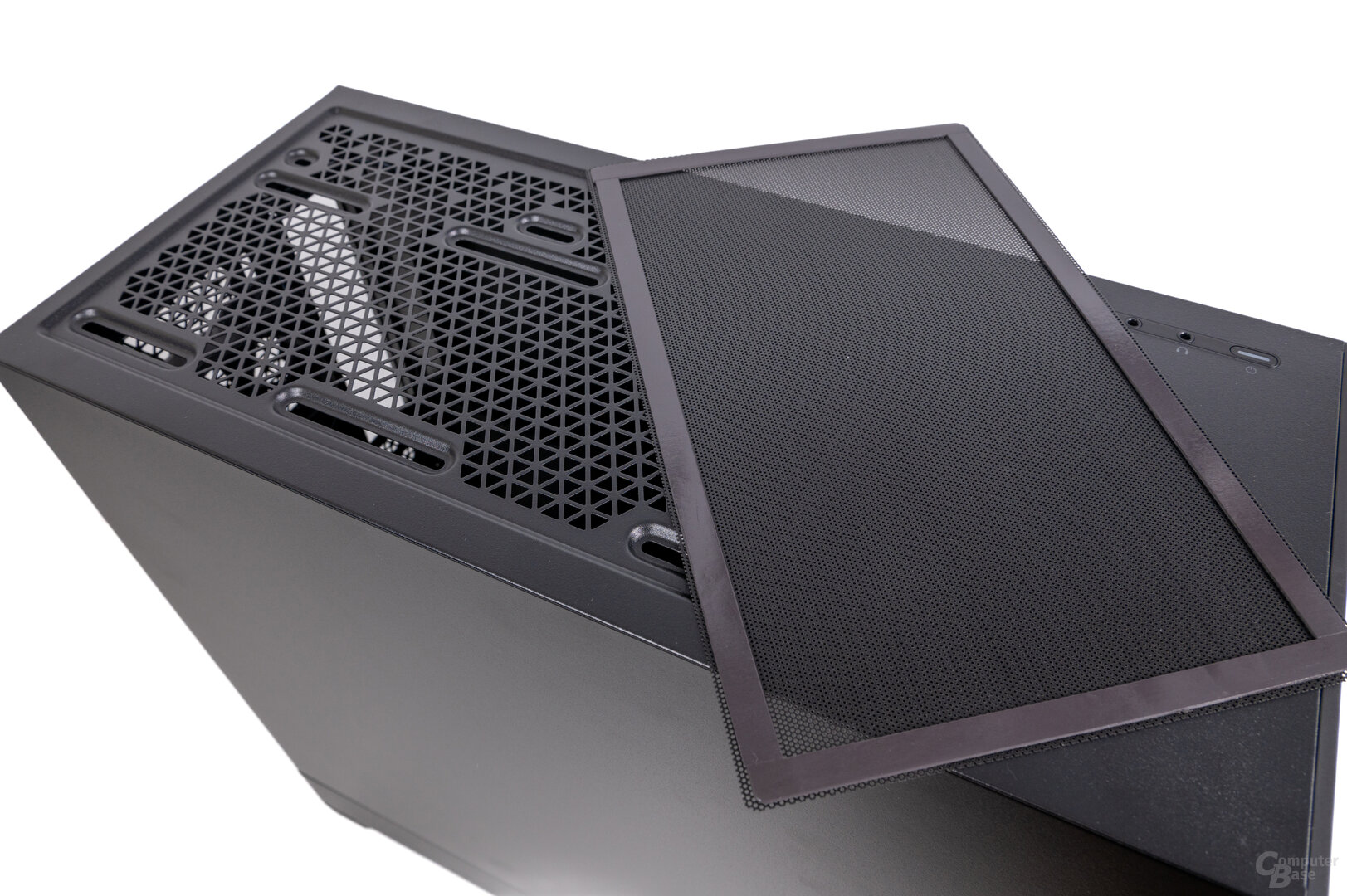 Fractal Design Pop tested: Pop Air with magnetic dust filter
Fractal Design Pop tested: Pop Air with magnetic dust filter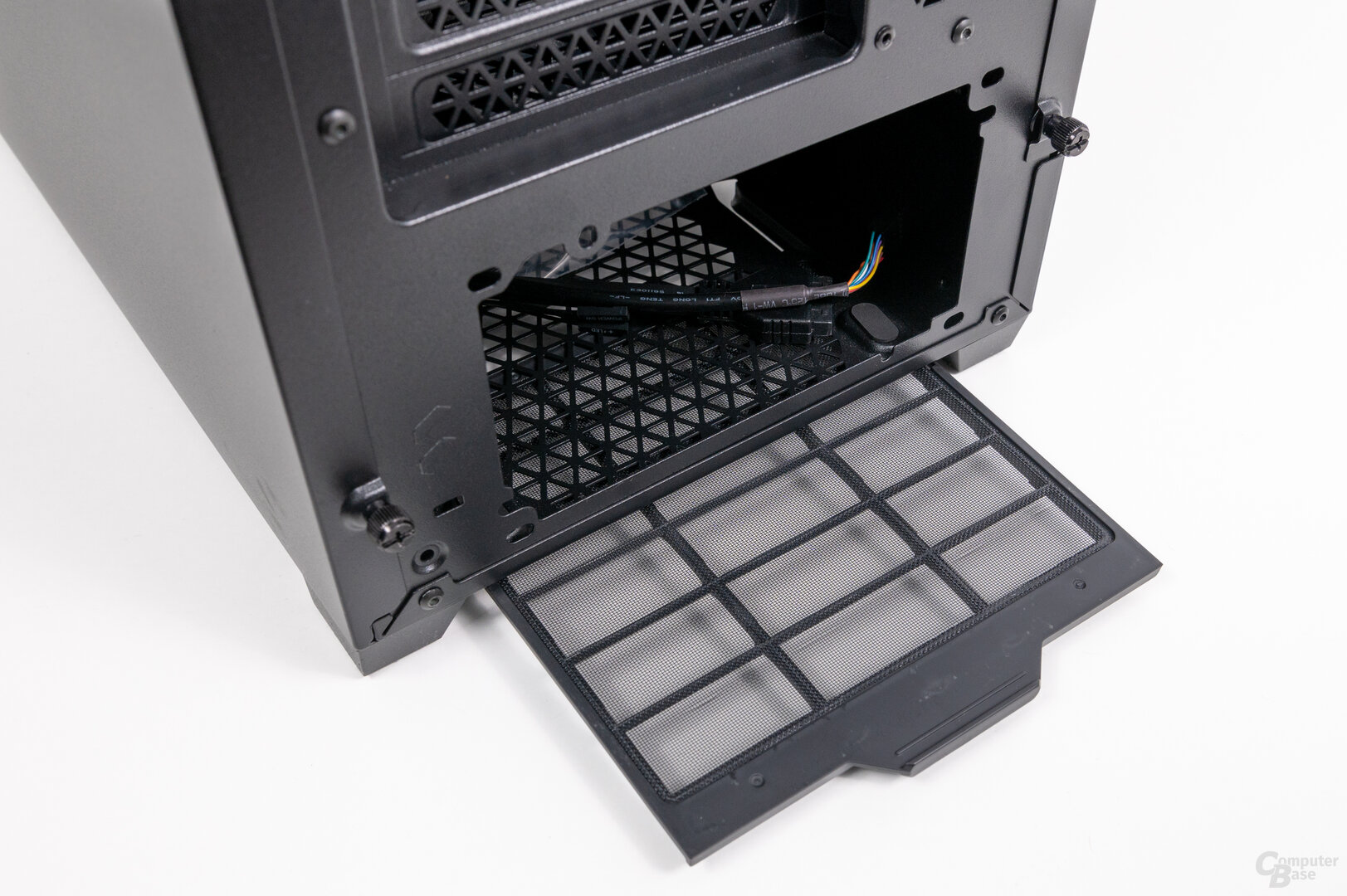 Fractal Design Pop review: dust filter in the power supply area
Fractal Design Pop review: dust filter in the power supply area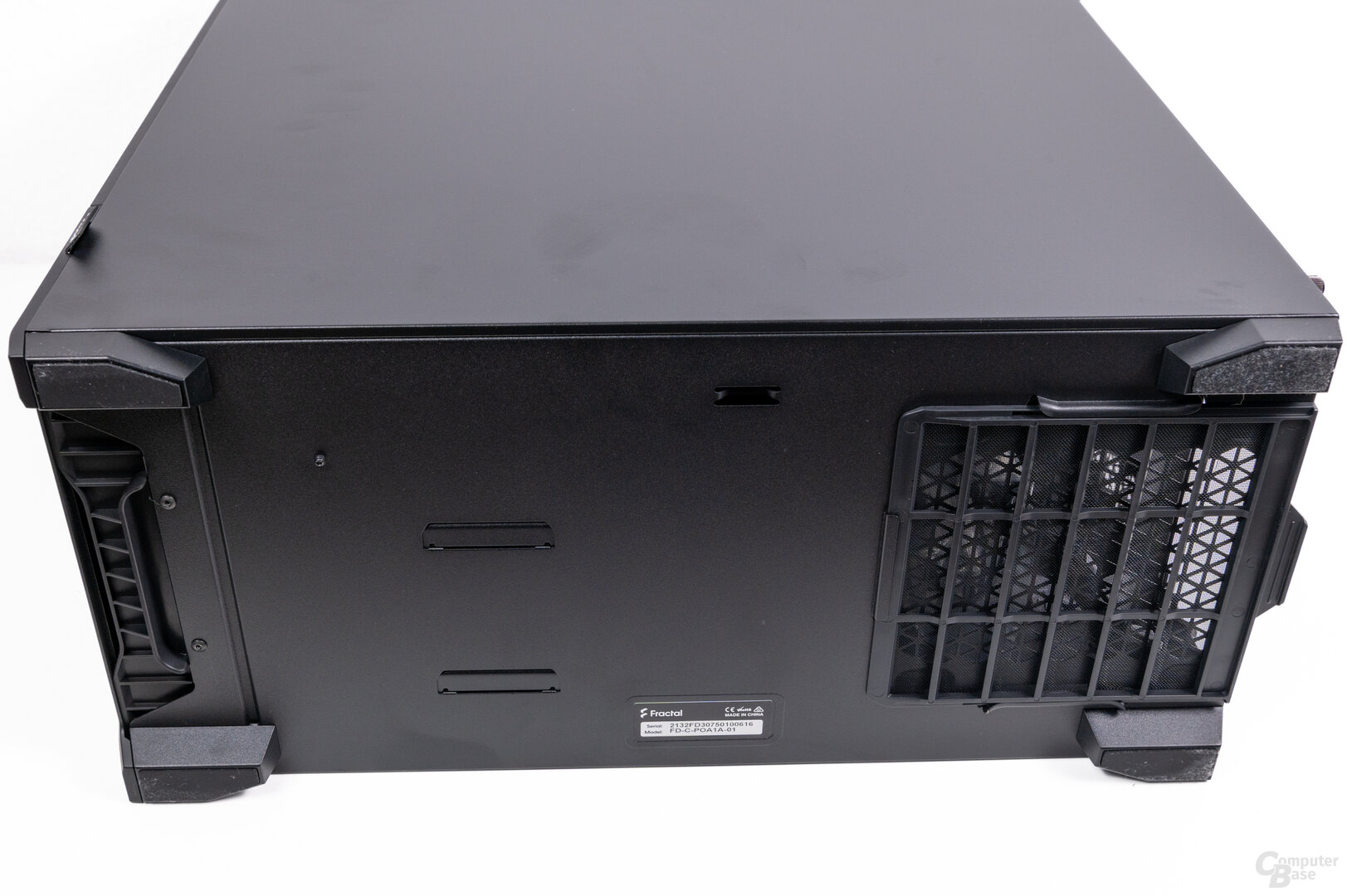 Fractal Design Pop Review
Fractal Design Pop ReviewThe border of the mesh grid on the front element is also simple but effectively implemented. If there were occasional sharp edges with other cases from other manufacturers, Fractal Design encloses the grid tabs in plastic recesses so that they do not protrude. Also on or behind the front cover is the only point of criticism of the Pop series concerning the processing quality: The retaining plates for the front fans are extremely unstable. When installing the front fans, the sheet metal bends conspicuously. More stability would be desirable here.
Hidden 5.25″ bay
The very straightforward design has a special feature on the outside that has only rarely been seen for some time. We're talking about two external 5.25″ bays for accommodating drives. The slots are hidden below the front panel behind a plastic cover that is held in place magnetically.
 Fractal Design Pop in the test: 5.25″ drives are hidden in a panel
Fractal Design Pop in the test: 5.25″ drives are hidden in a panel Fractal Design Pop in the test: 5.25″ drives are hidden in a panel /> Fractal Design Pop in the test: 5.25″ drives are hidden in a panel (Image: Fractal Design)
Fractal Design Pop in the test: 5.25″ drives are hidden in a panel /> Fractal Design Pop in the test: 5.25″ drives are hidden in a panel (Image: Fractal Design)When using the drive bays, however, it should be borne in mind that the hard disk tray behind them must be removed. The two slides can be easily removed from their holders using a knurled screw. The slides each hold a 3.5″ and 2.5″ drive. Decoupling rings are included in the scope of delivery. In addition to the mounting location in the lower power supply chamber, there is also the option of attaching a slide to the mainboard carrier. If the 5.25″ bays were left out, there would be the option of installing a total of three hard disk trays.
Save on accessories
However, only two of these slides are included in the scope of delivery. A third would have to be purchased as an accessory at a price of around 5 euros. The same applies to another SSD mount. In addition to the one that is attached to the mainboard rear panel and accommodates two 2.5″ hard drives, another bracket can be mounted in the front hardware chamber.
- < figure class="gallery__figure">
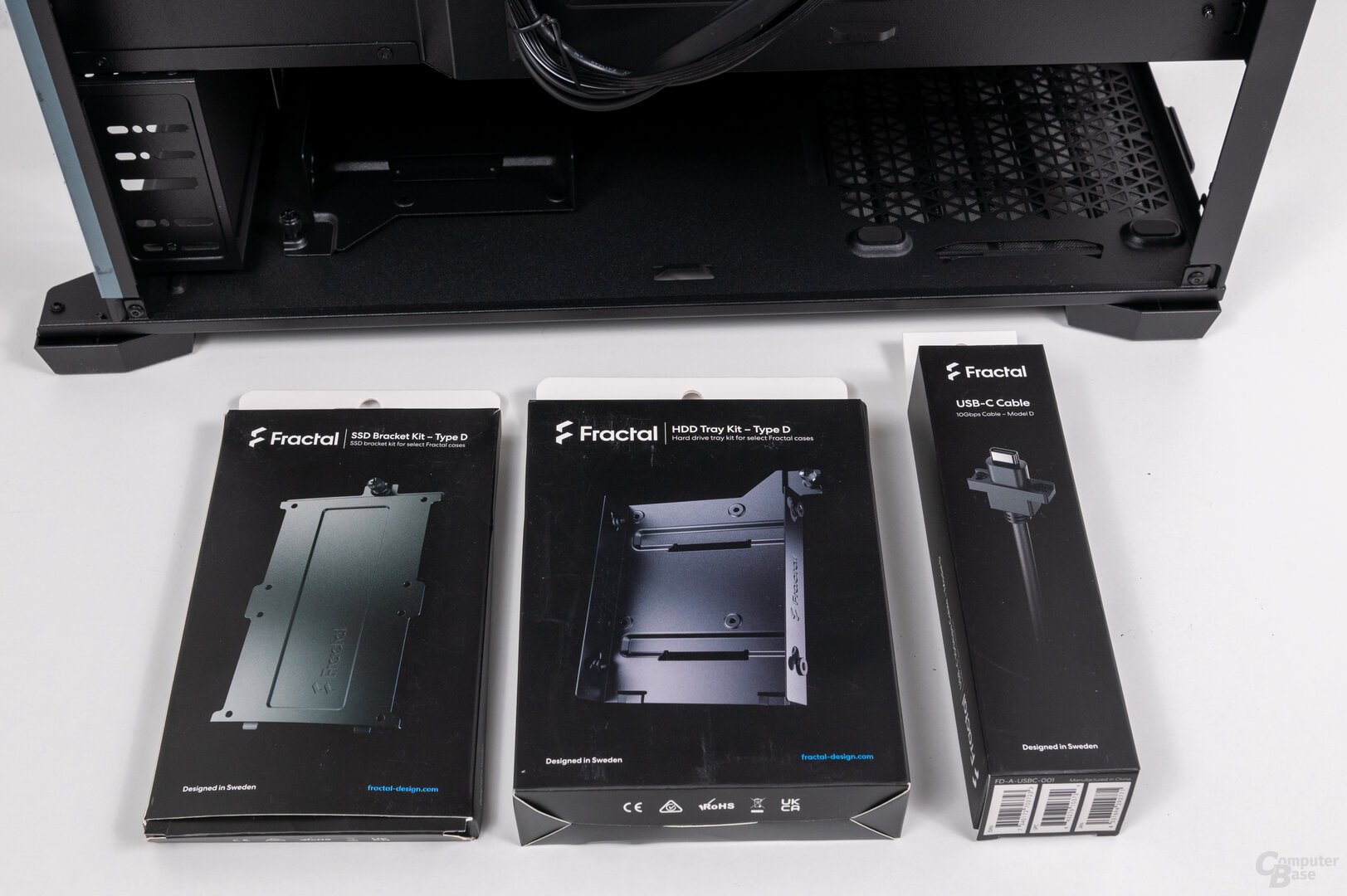 Fractal Design Pop in test: Accessories
Fractal Design Pop in test: Accessories
Image 1 of 10
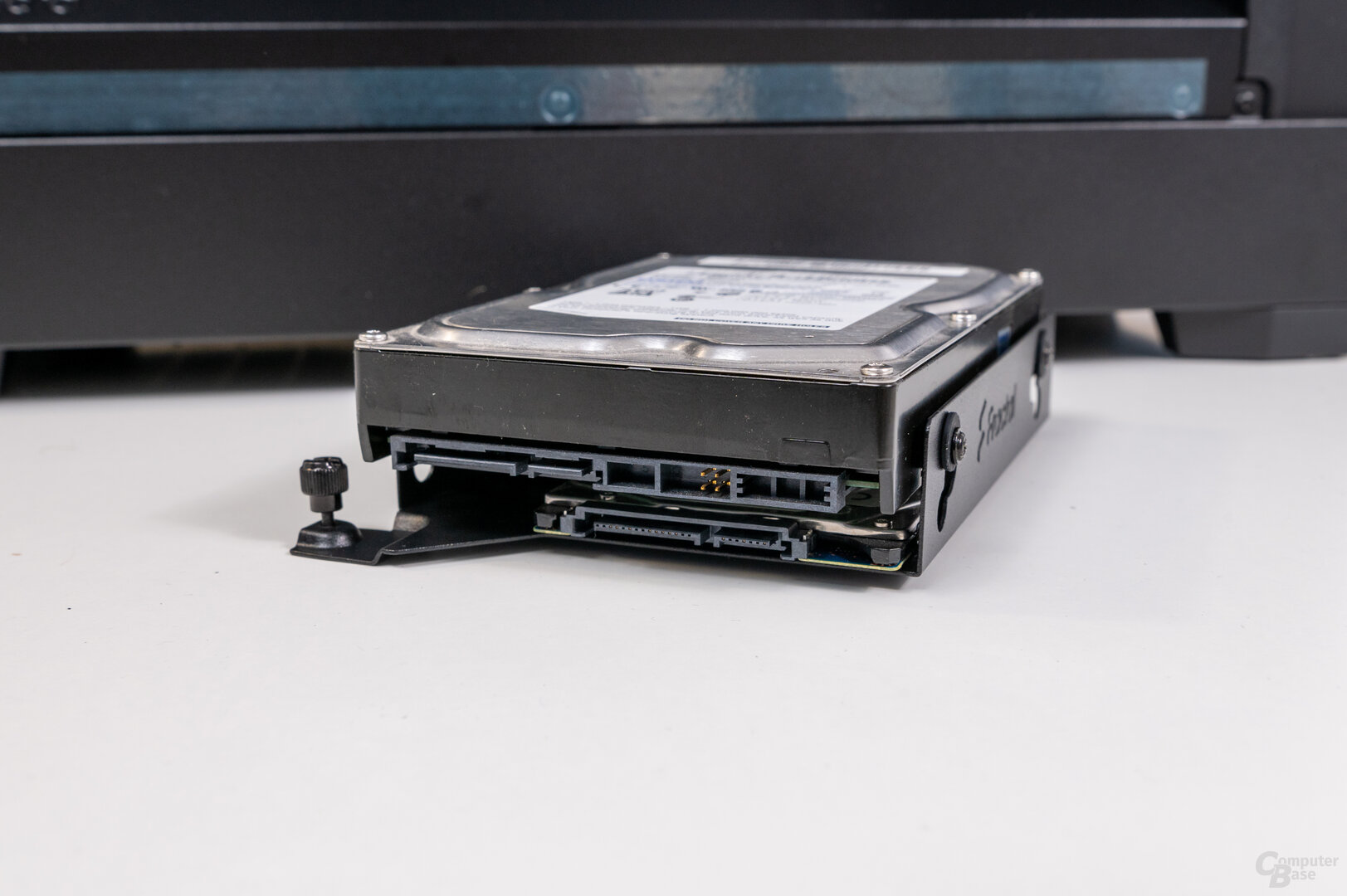 Fractal Design Pop Review: Drive Sled
Fractal Design Pop Review: Drive Sled Fractal Design Pop Review: SSD Mount
Fractal Design Pop Review: SSD Mount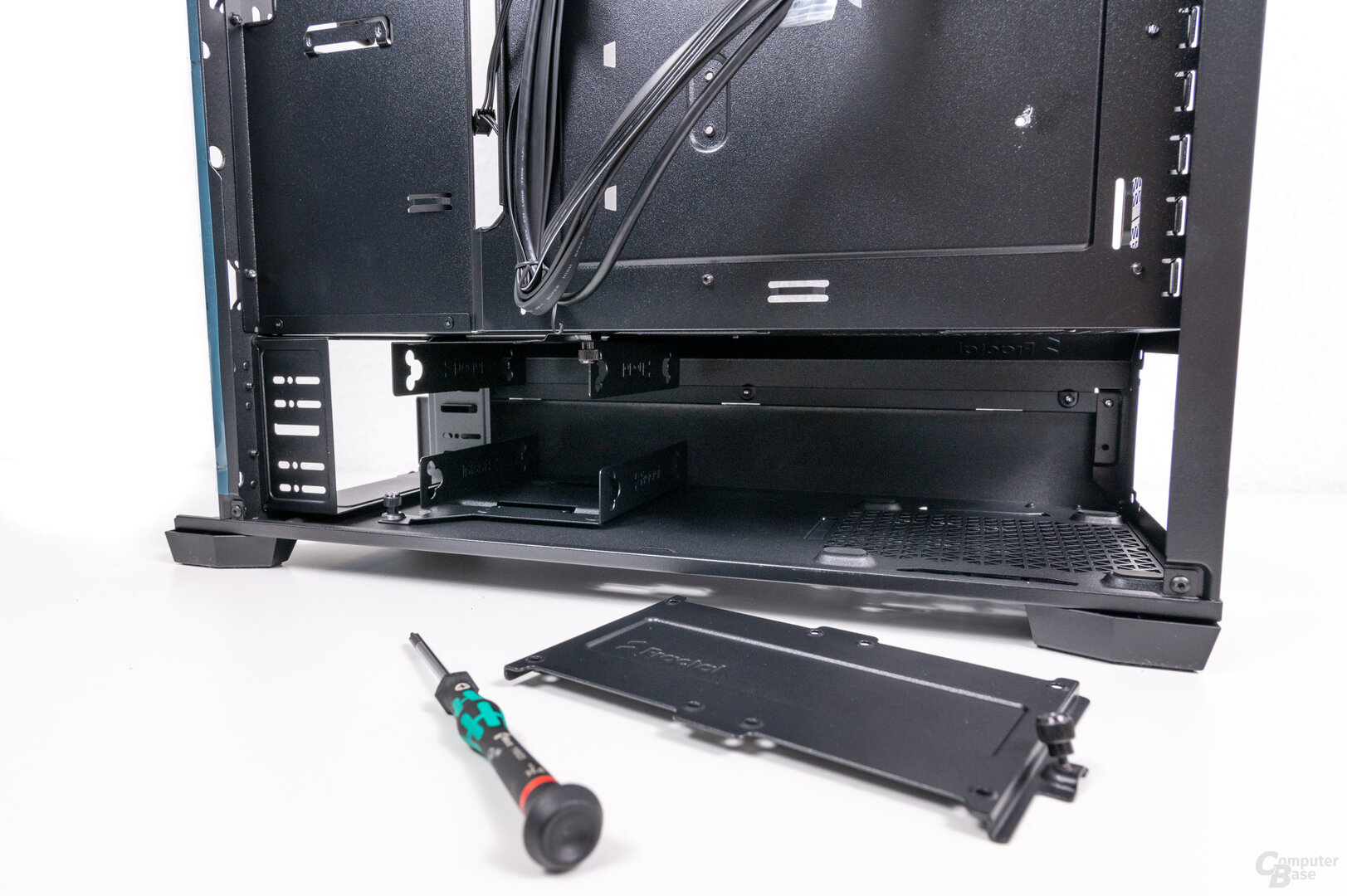 Fractal Design Pop review: HDD sled
Fractal Design Pop review: HDD sled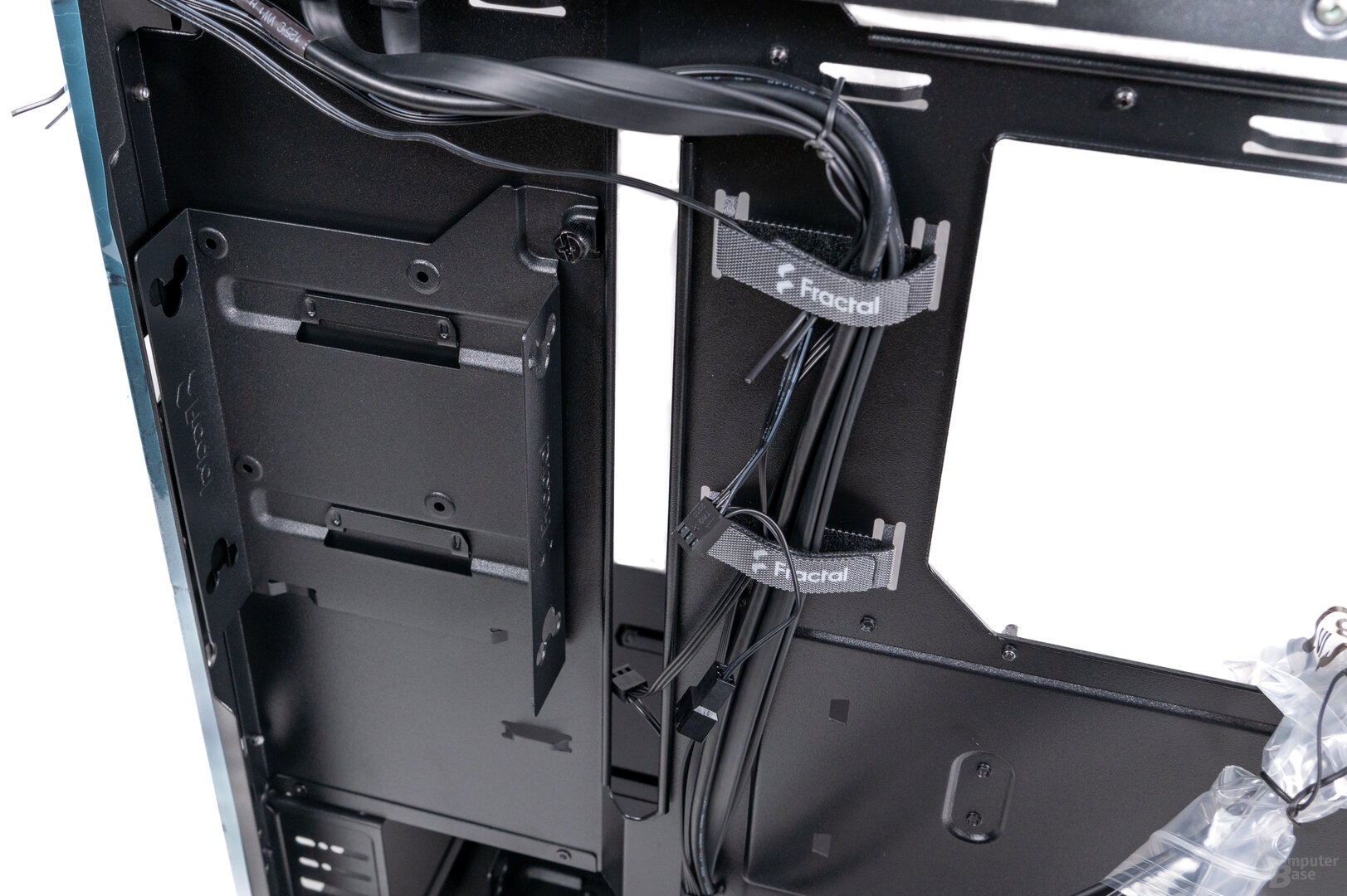 Testing Fractal Design Pop: Alternative mounting location for an HDD tray
Testing Fractal Design Pop: Alternative mounting location for an HDD tray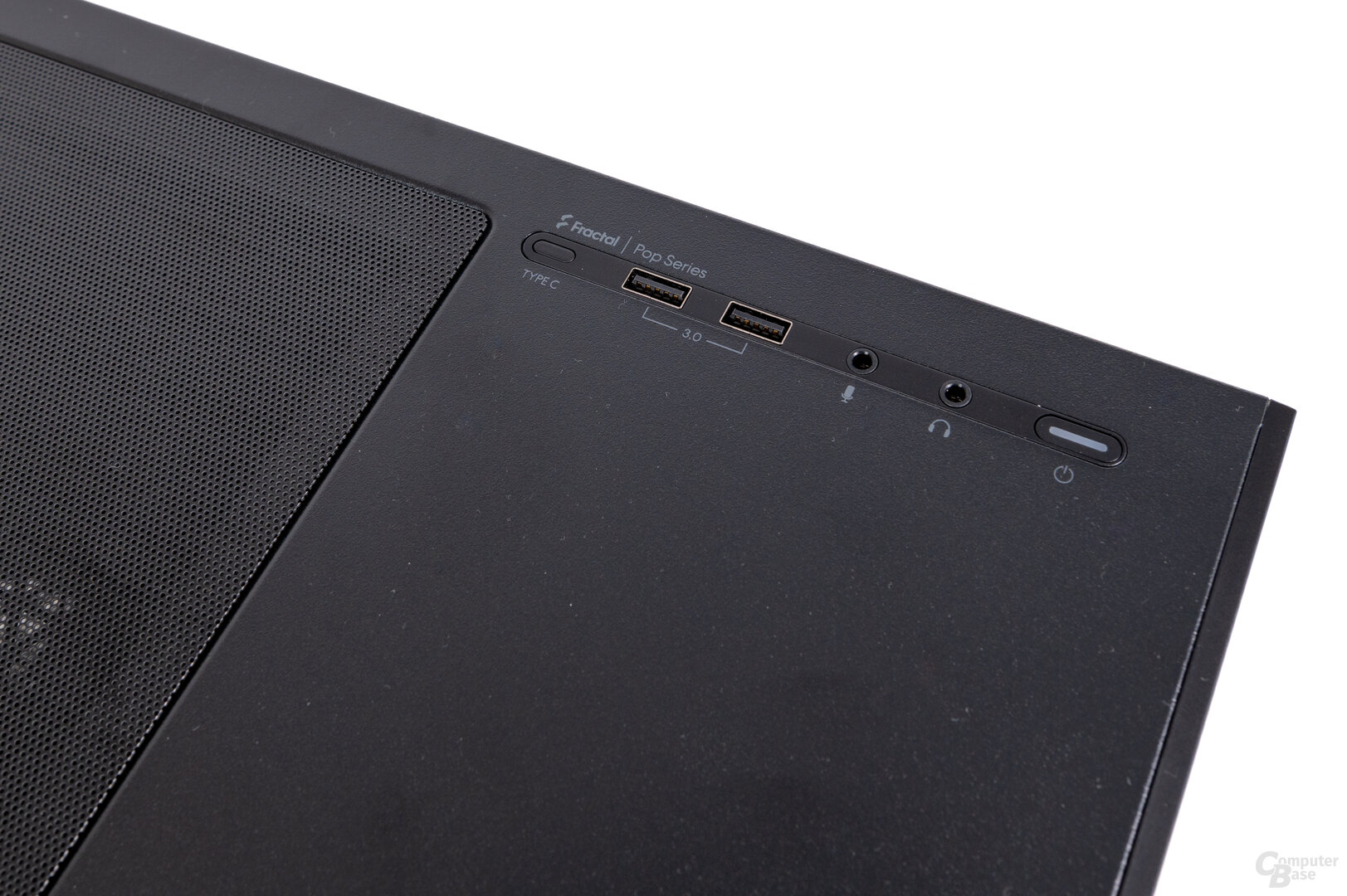 Fractal Design Pop on test: I/O panel with blind USB-C port
Fractal Design Pop on test: I/O panel with blind USB-C port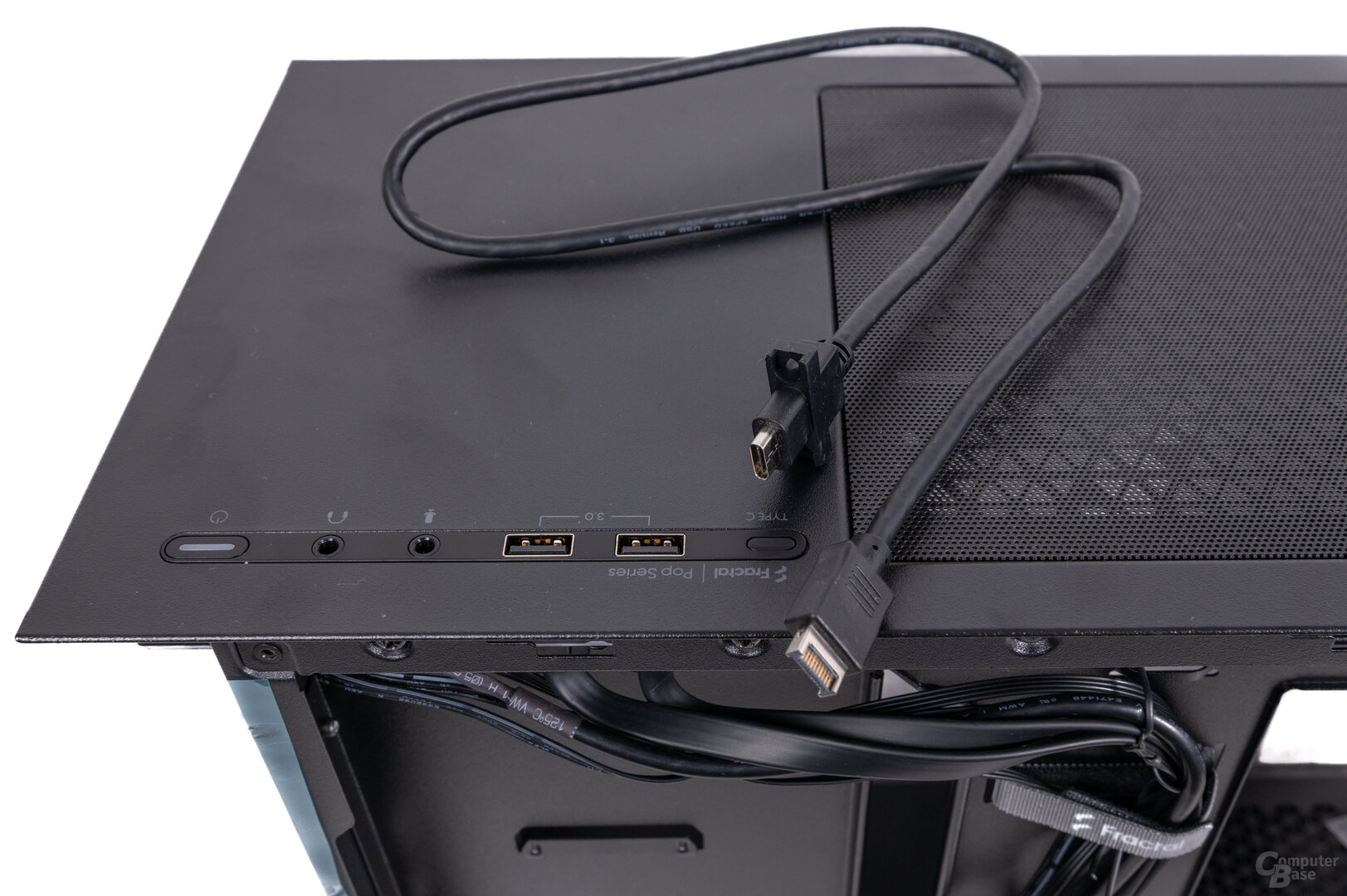 Fractal Design Pop Review: Optional USB 3.2 Cable
Fractal Design Pop Review: Optional USB 3.2 Cable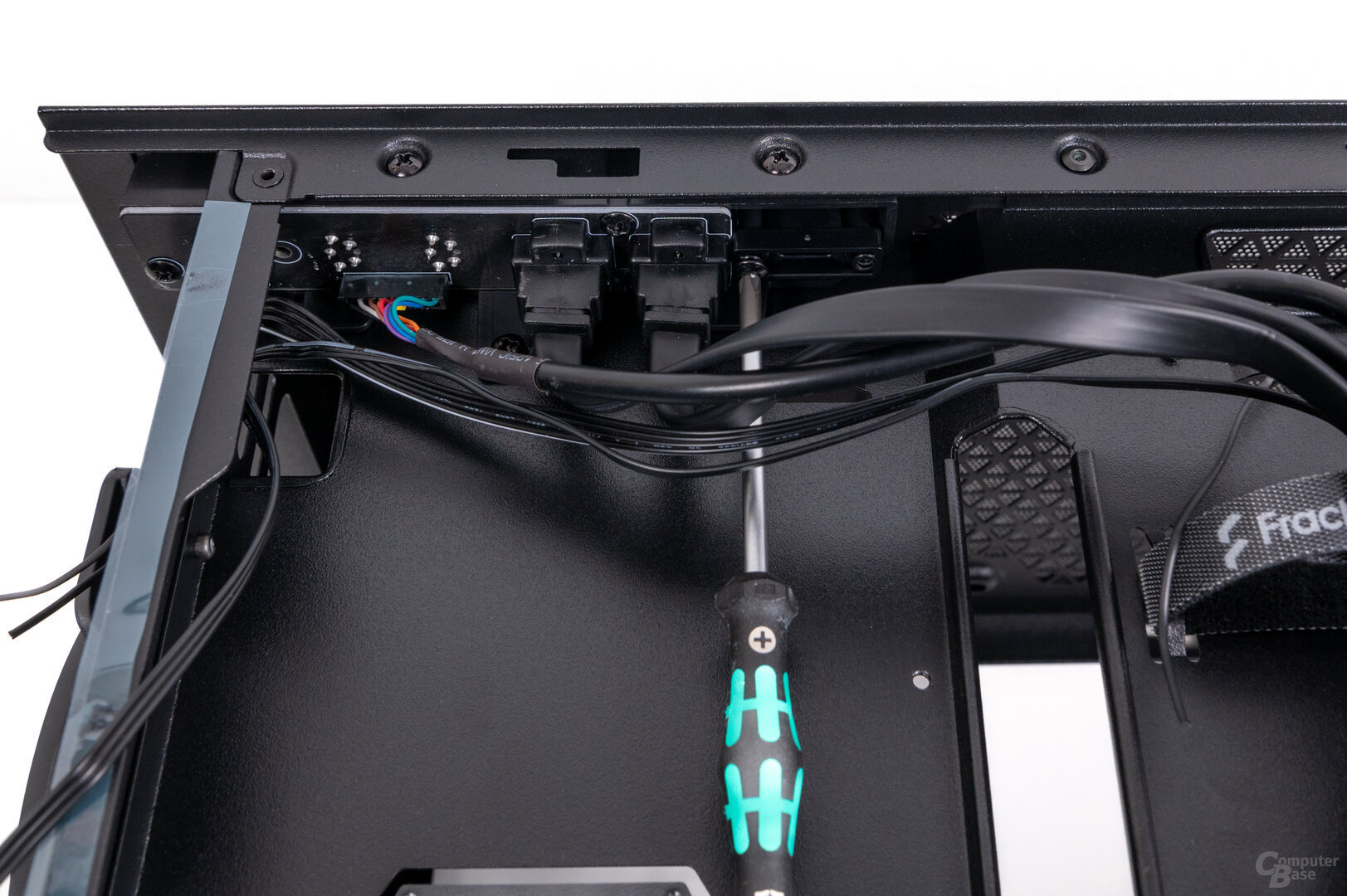 Fractal Design Pop on test: Optional USB 3.2 cable
Fractal Design Pop on test: Optional USB 3.2 cable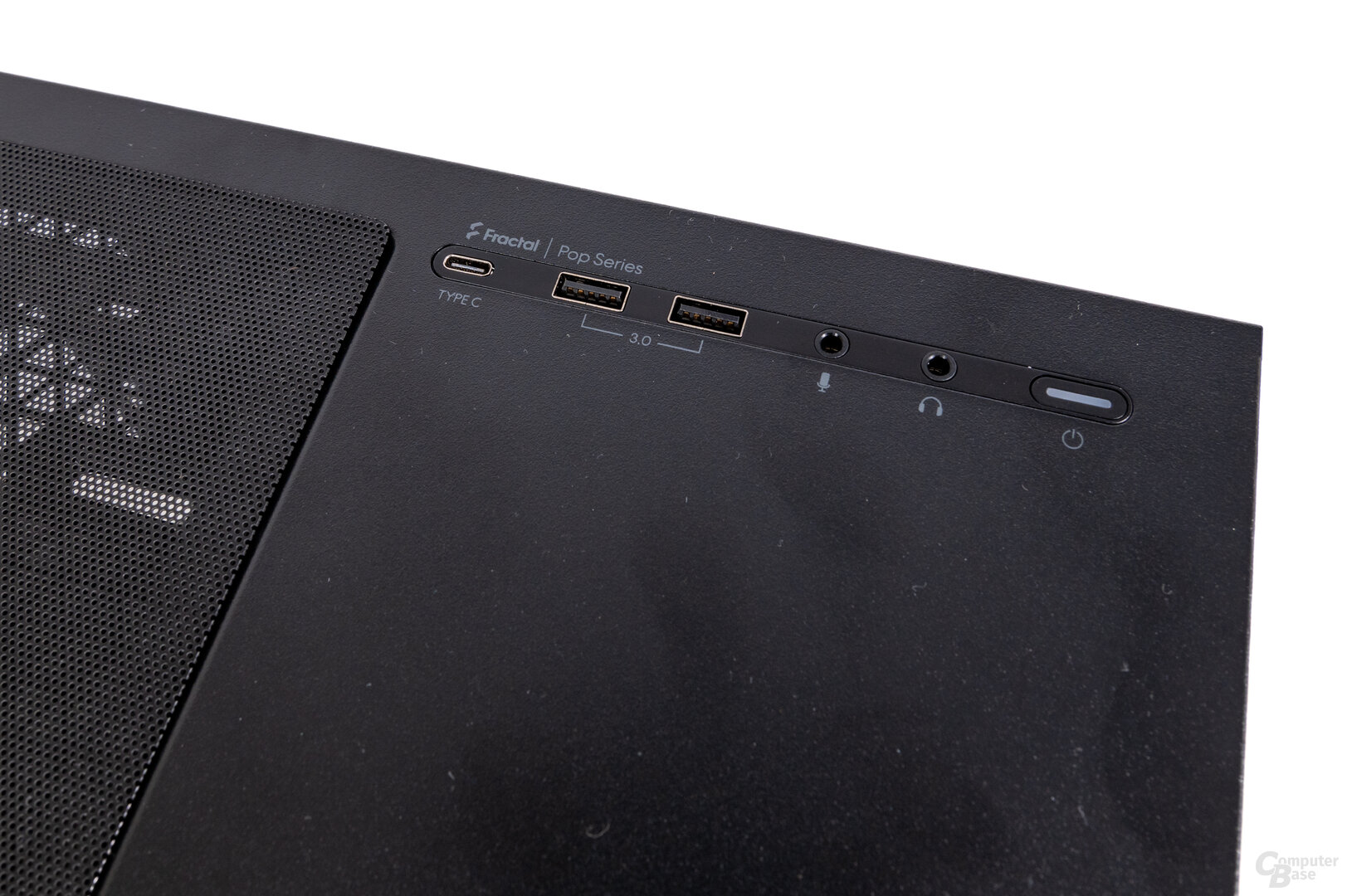 Fractal Design Pop Review: Optional USB 3.2 Cable
Fractal Design Pop Review: Optional USB 3.2 Cable
The austerity course is crowned with the I/O panel. As with other cases from the manufacturer, a USB-C port (USB 3.2 Gen 2) is noted here, but there is only a plastic cover in the corresponding place. If you want to use the fast interface on the front of the lid, you pay extra. The price of around 13 euros is not the only thing that annoys, because users are already openly complaining about the poor availability of the cable. If the saved drive mounts are still halfway understandable, the USB port should be regarded as the current standard despite the desired orientation in the entry-level segment – especially since the offshoots are almost all around 100 euros.
-
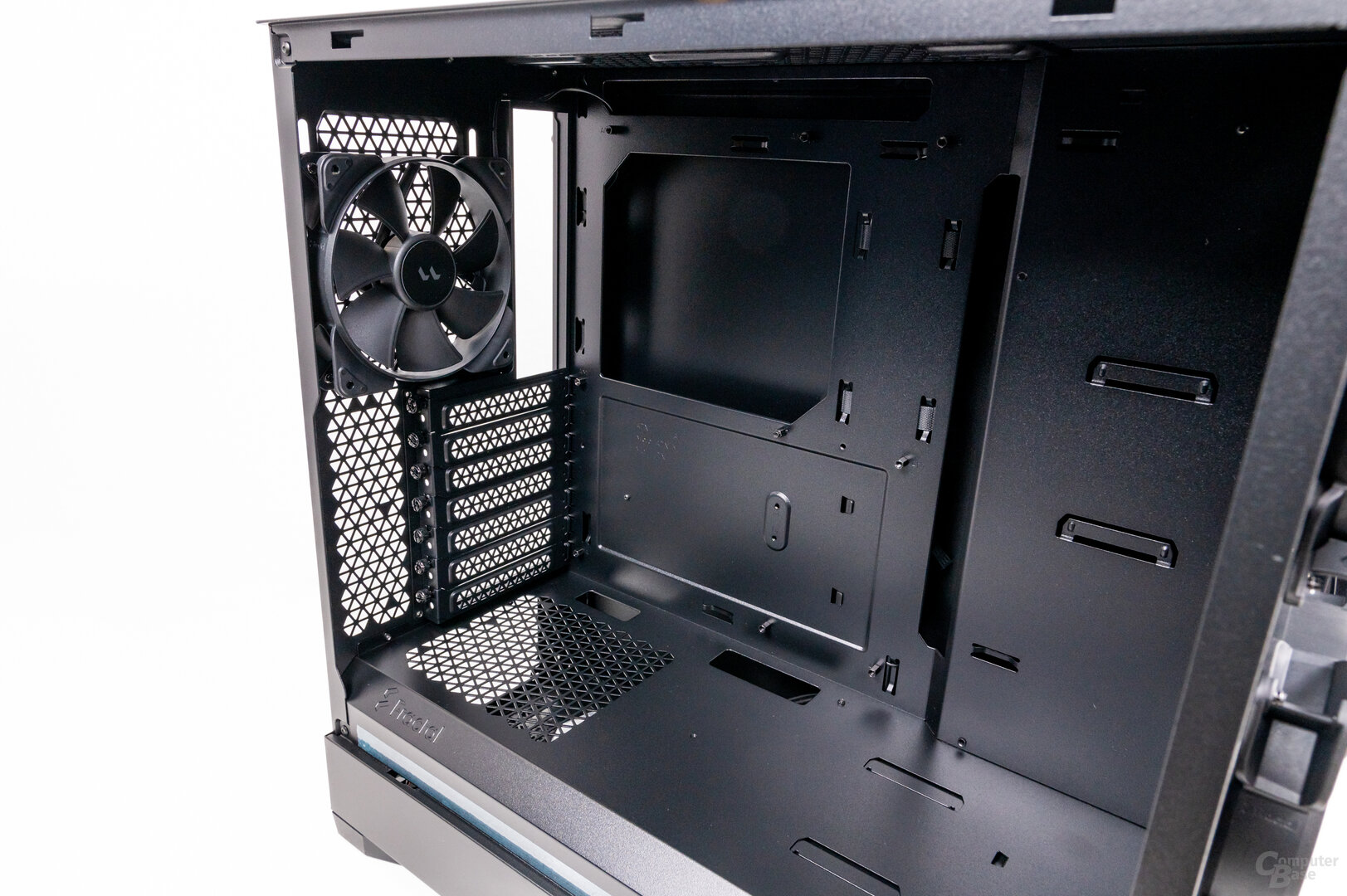 Fractal Design Pop Review
Fractal Design Pop Review
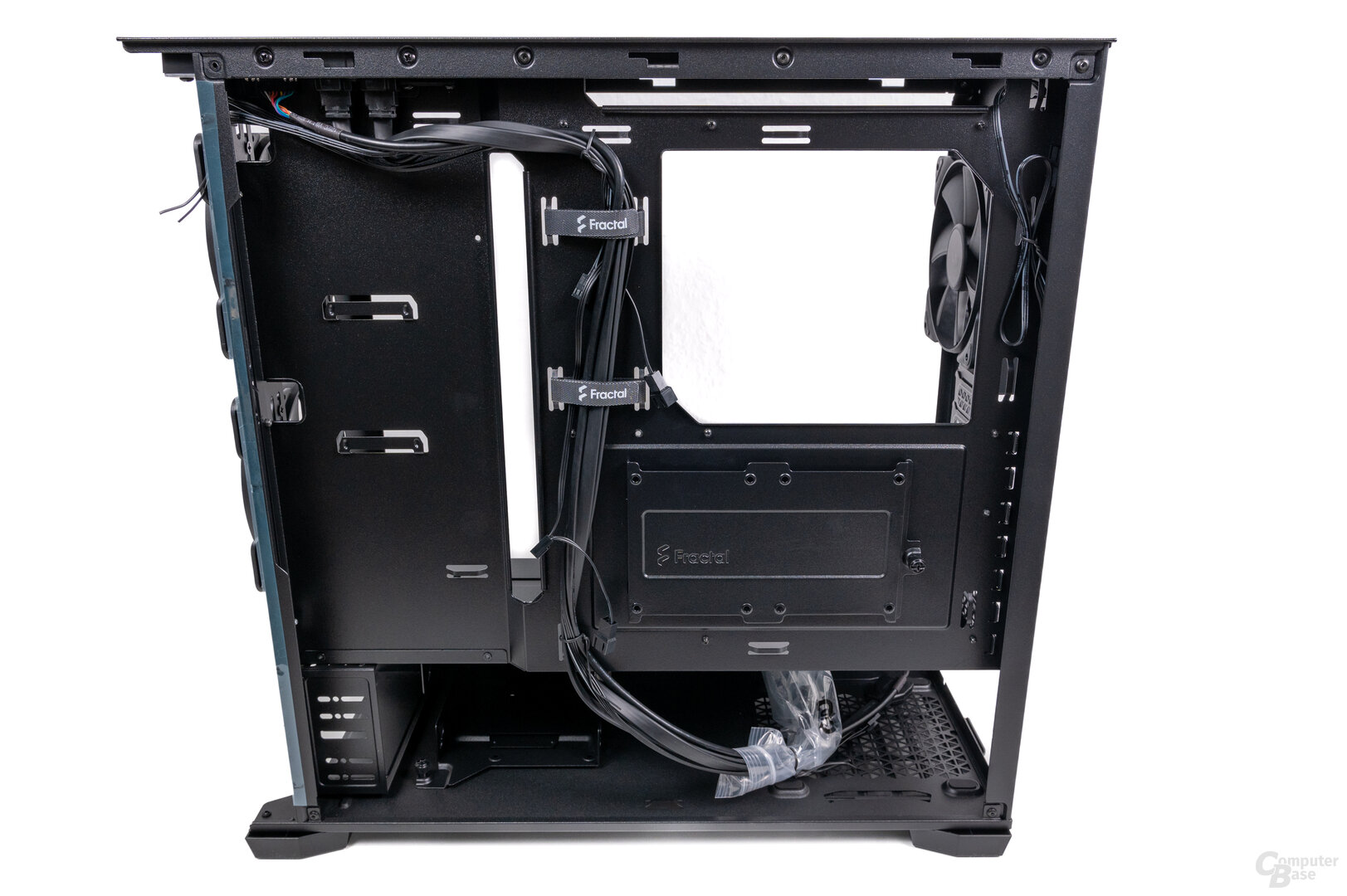
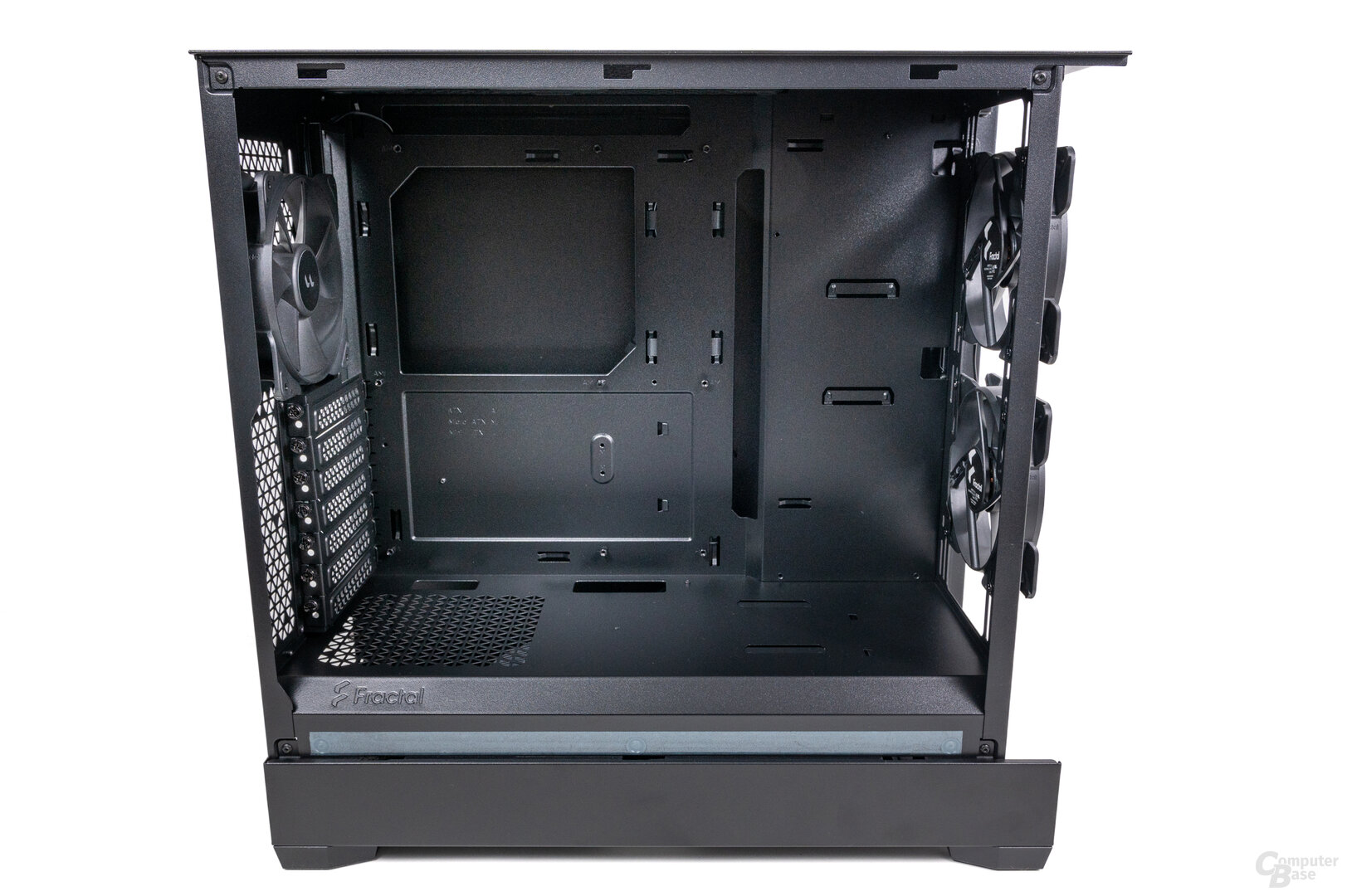
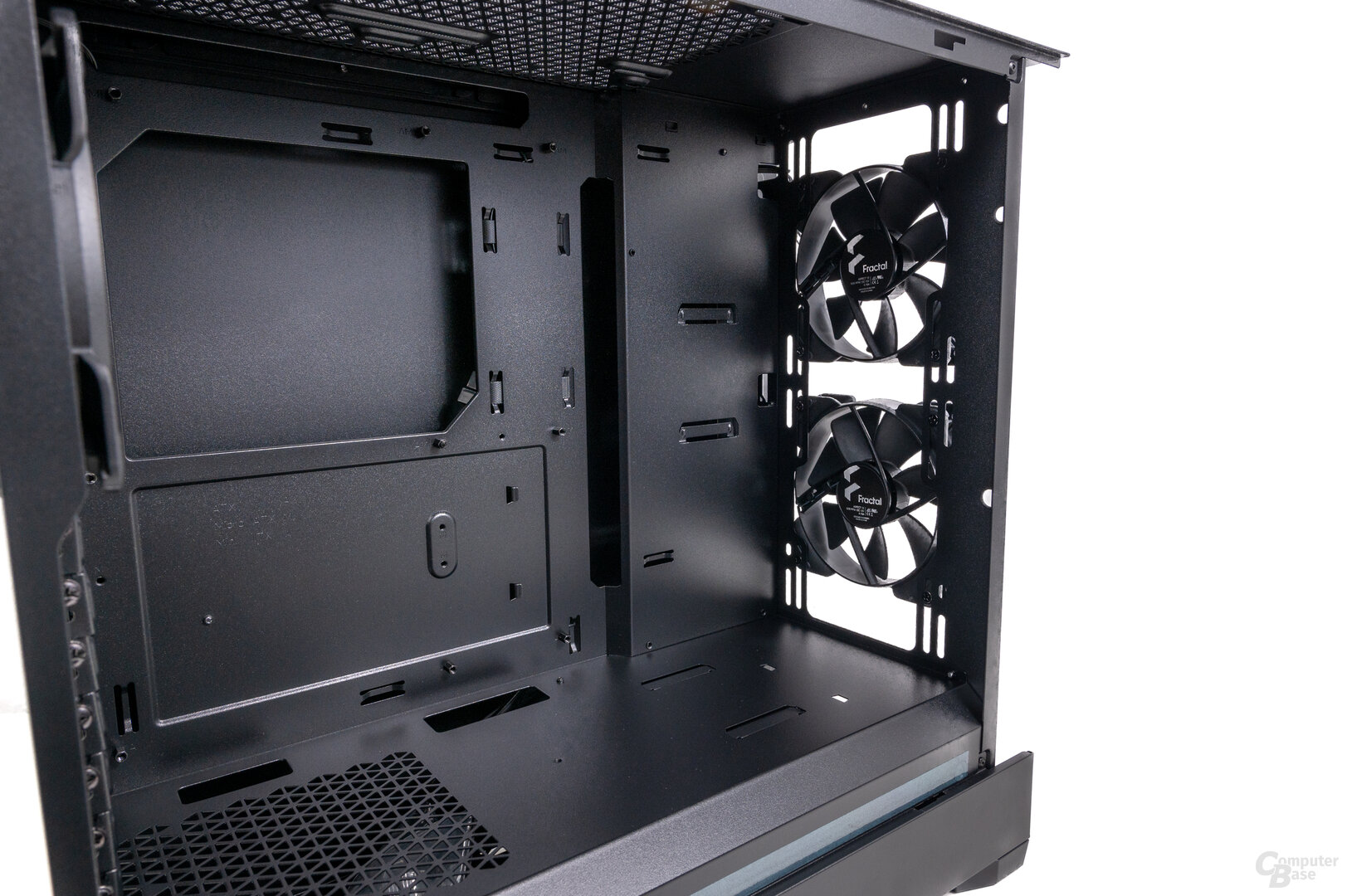
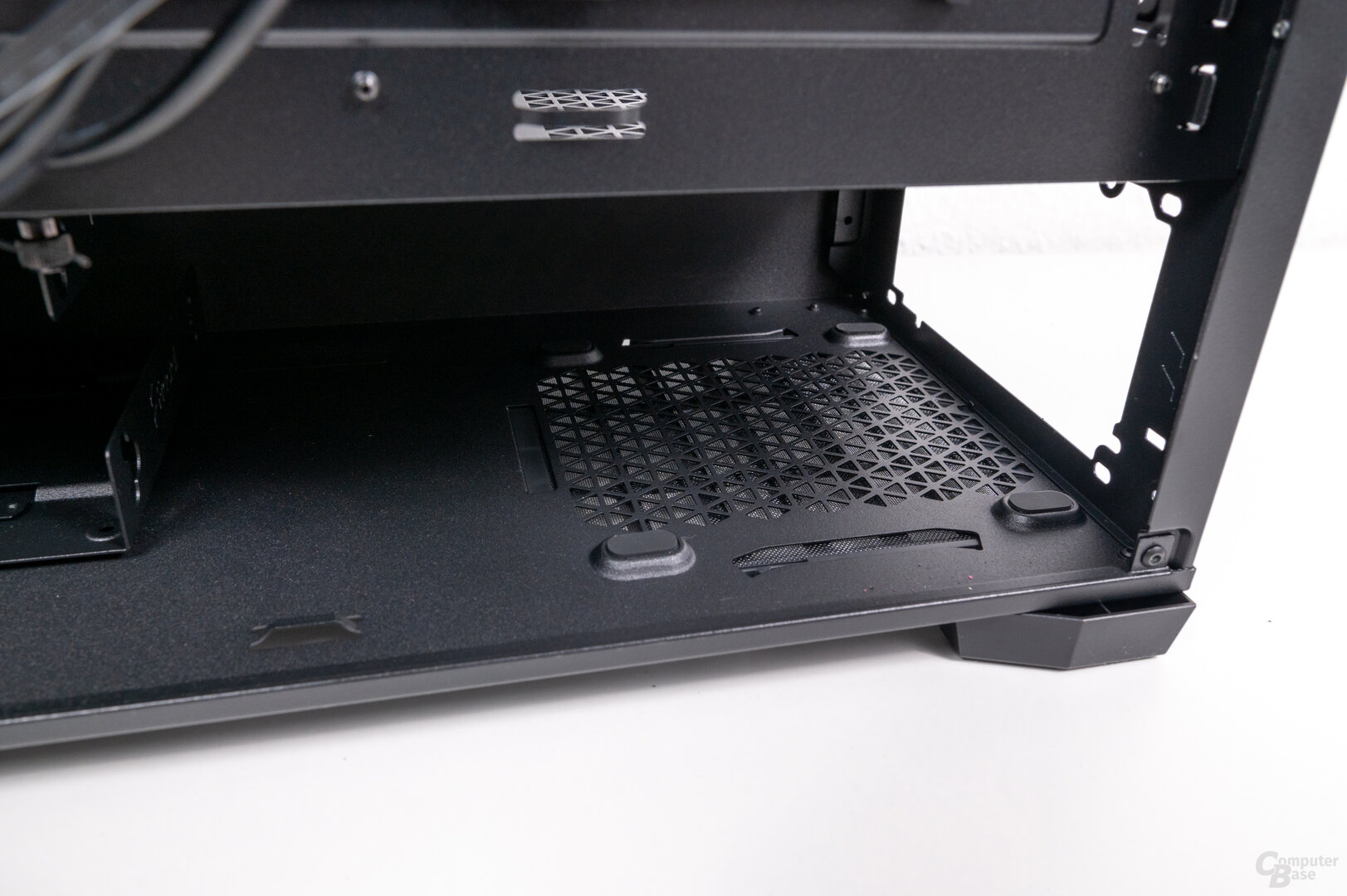
Fractal Design Pop Review
Inside, the Pop series doesn't come up with any special features and even does without some essential features. First of all, there are the cable outlets, which are bare and have no protective rubber caps. Vertical mounting of the expansion slots is also not offered. The rear chamber also offers little worth mentioning, apart from two Velcro straps for cable management and rubber dampers in the power supply area.
Installation and everyday experiences
The hardware installation is mostly problem-free with the Fractal Design Pop Air. Since the cover cannot be removed, the mainboard power supply should be attached before installing the mainboard. The same applies to the upper fans, where attention must also be paid to the power cables. In the test, only the front 140 mm fan could be installed due to a lack of space, while 120 mm models should easily find space in both positions.
-
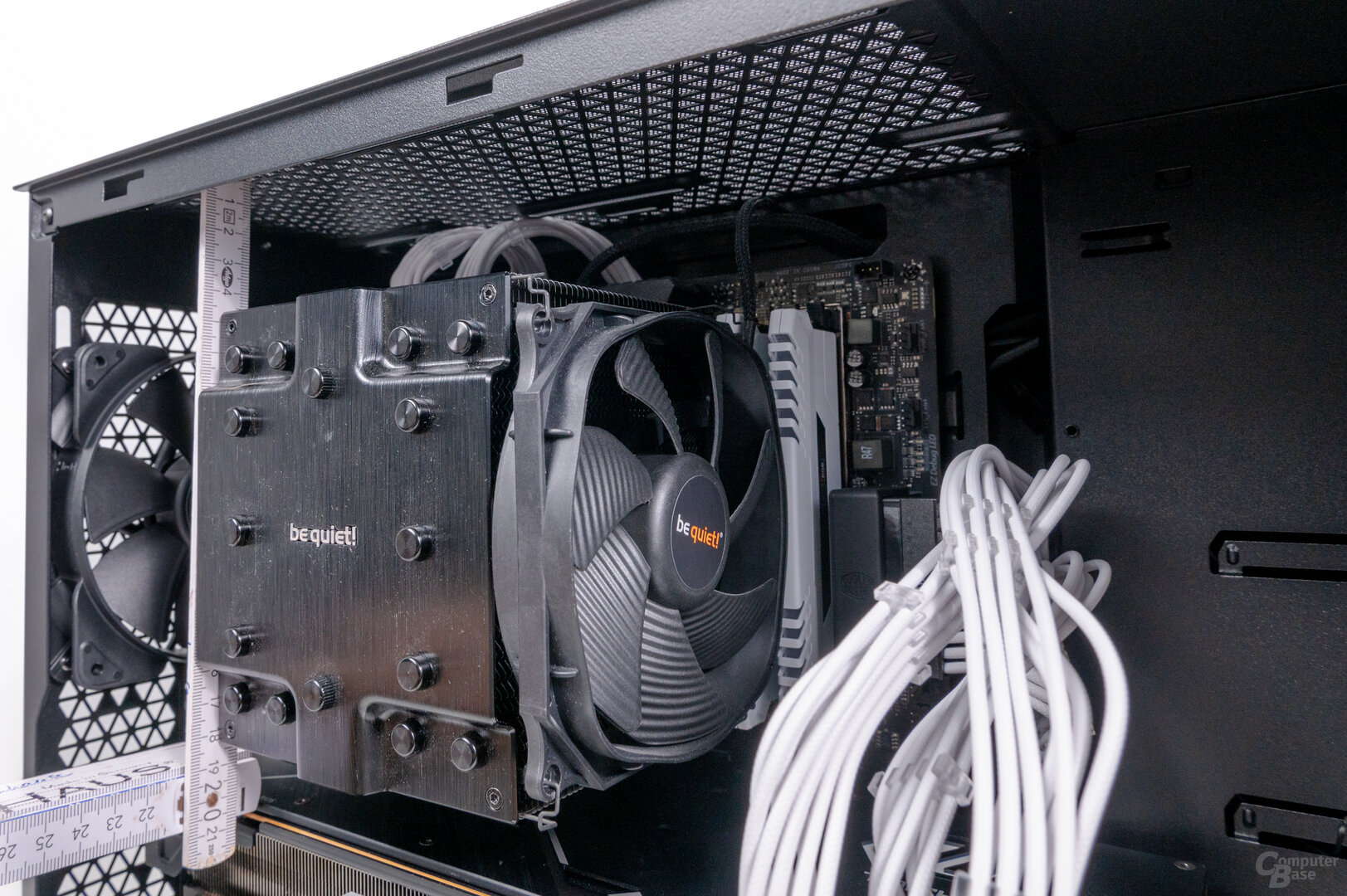 Fractal Design Pop Review
Fractal Design Pop Review
Image 1 of 14
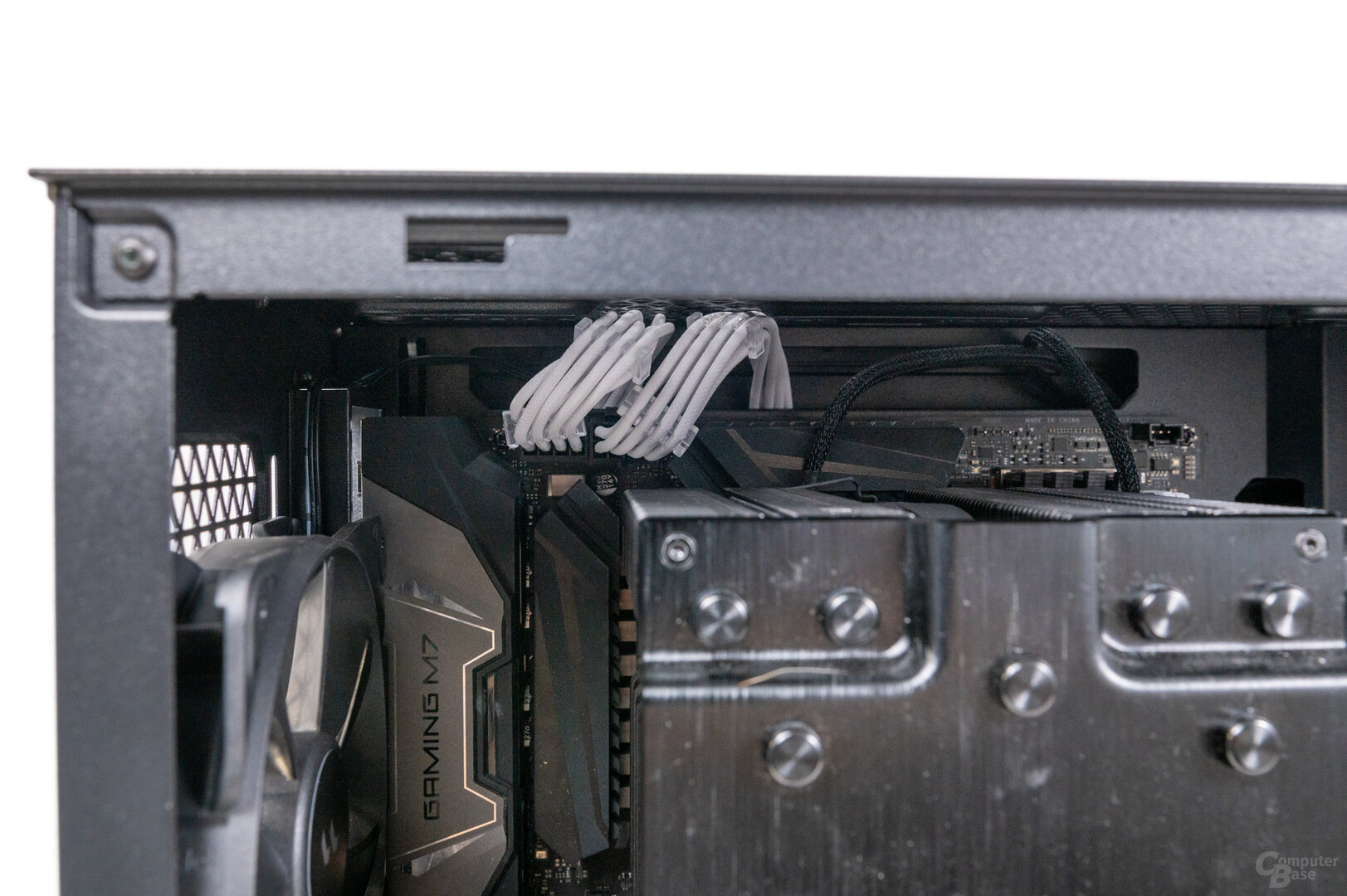 Fractal Design Pop Review
Fractal Design Pop Review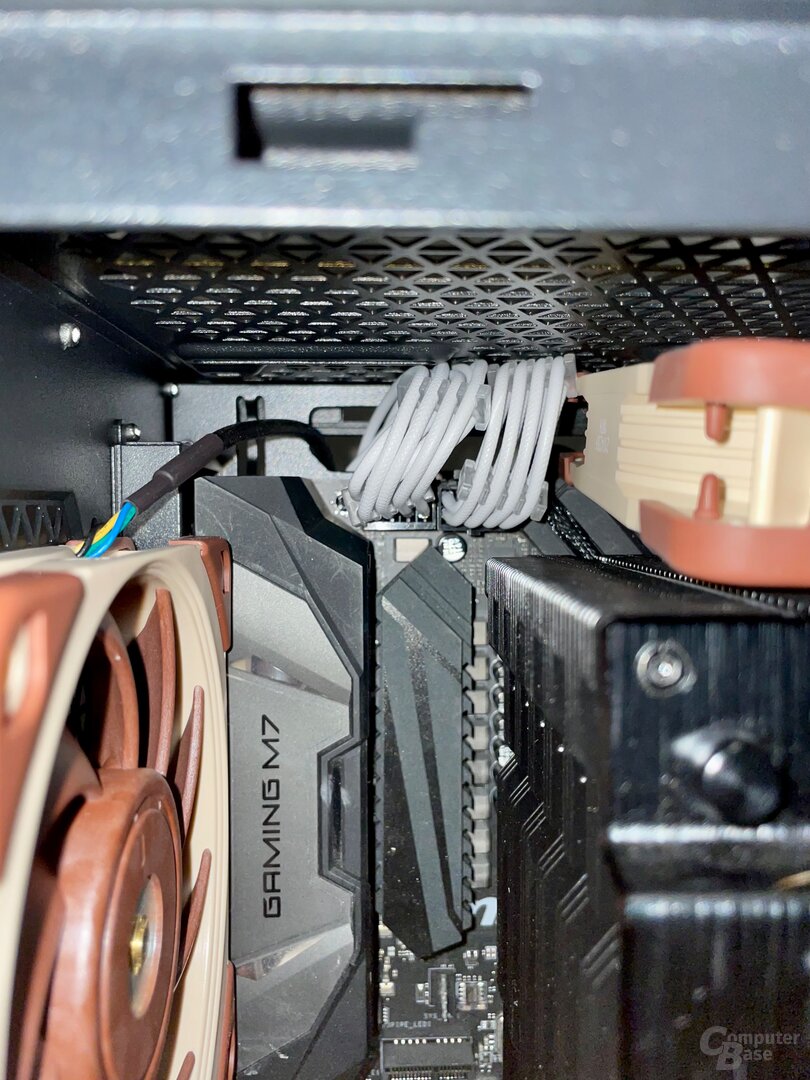 Fractal Design Pop Review: ATX power cables block rear 140mm fan
Fractal Design Pop Review: ATX power cables block rear 140mm fan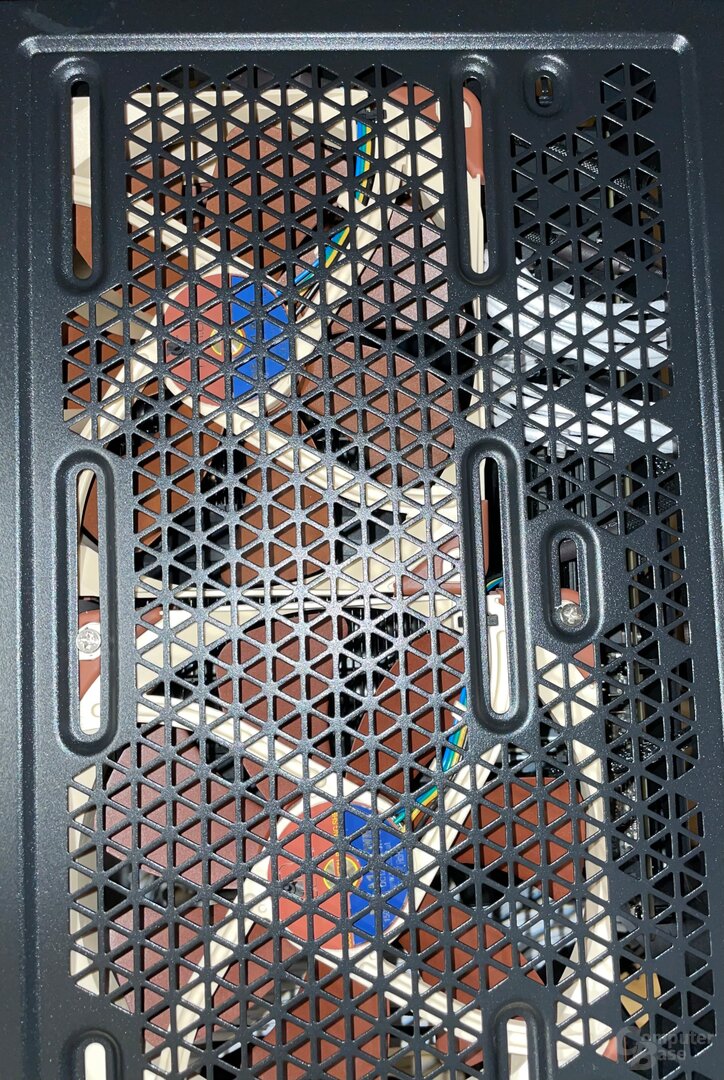 Fractal Design Pop Review: ATX power cables block rear 140mm fan
Fractal Design Pop Review: ATX power cables block rear 140mm fan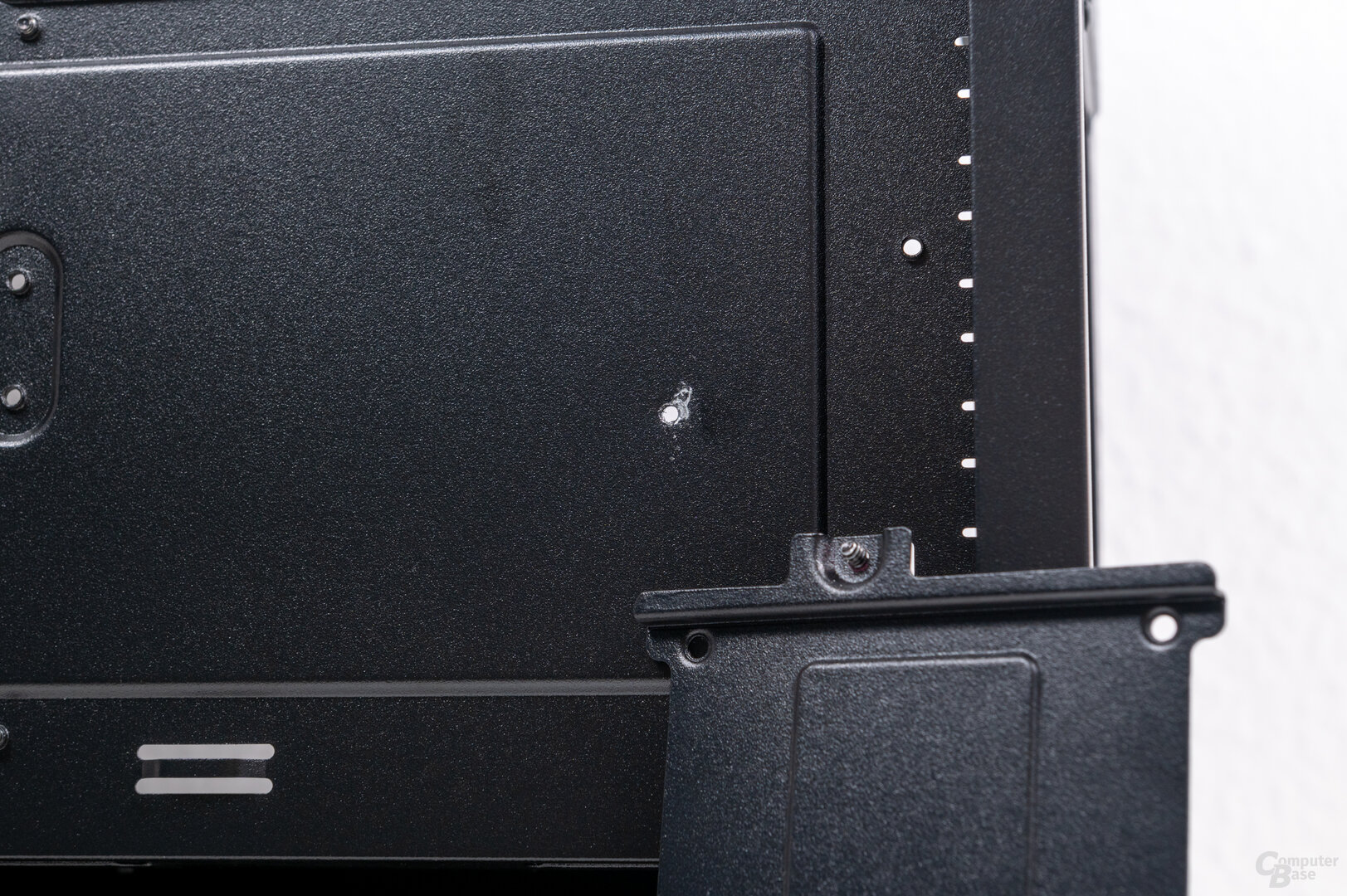 Fractal Design Pop in the test: Warped SSD sheet metal was an isolated case
Fractal Design Pop in the test: Warped SSD sheet metal was an isolated case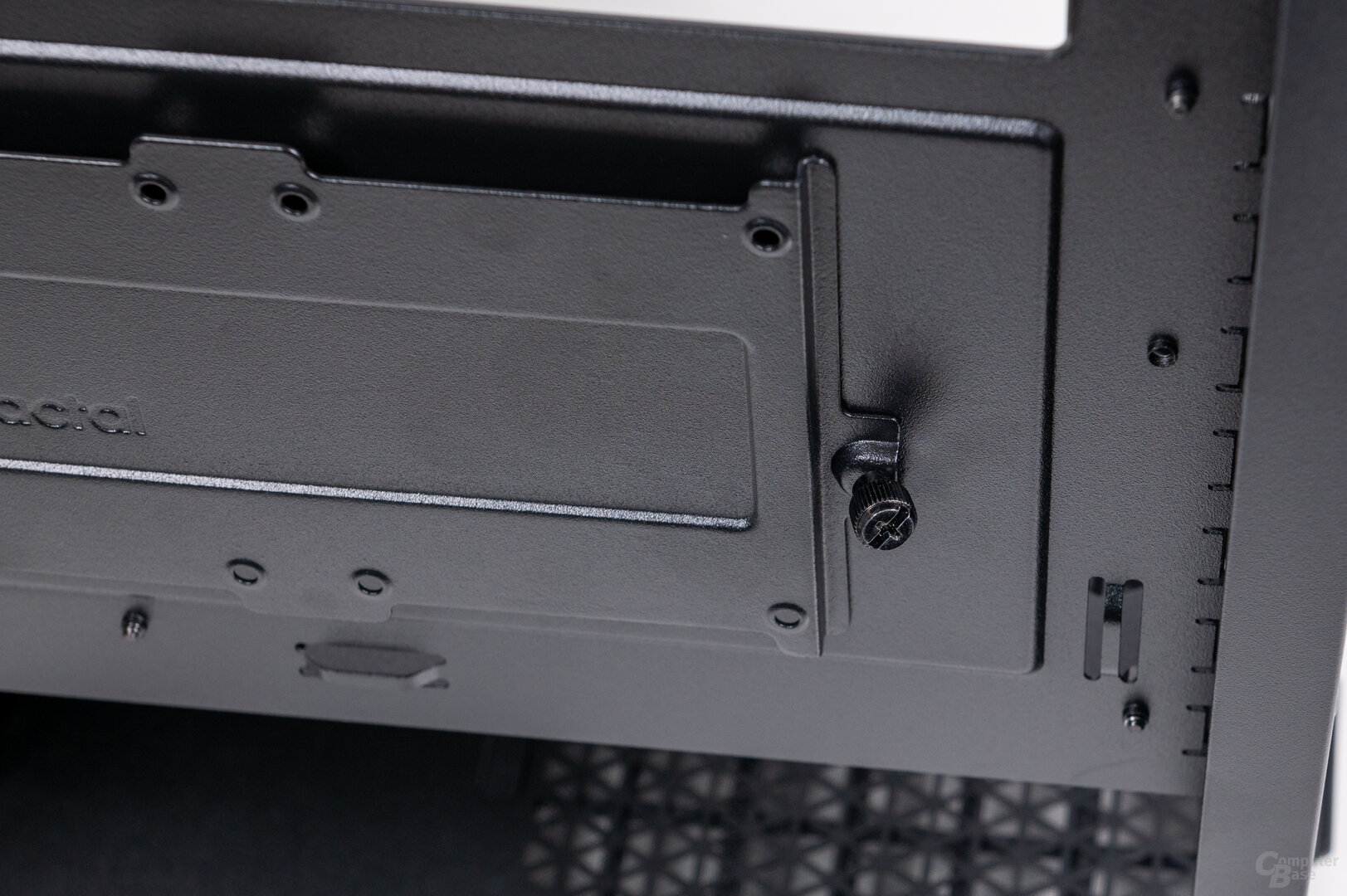 Fractal Design Pop in the test: Warped SSD sheet metal was an isolated case
Fractal Design Pop in the test: Warped SSD sheet metal was an isolated case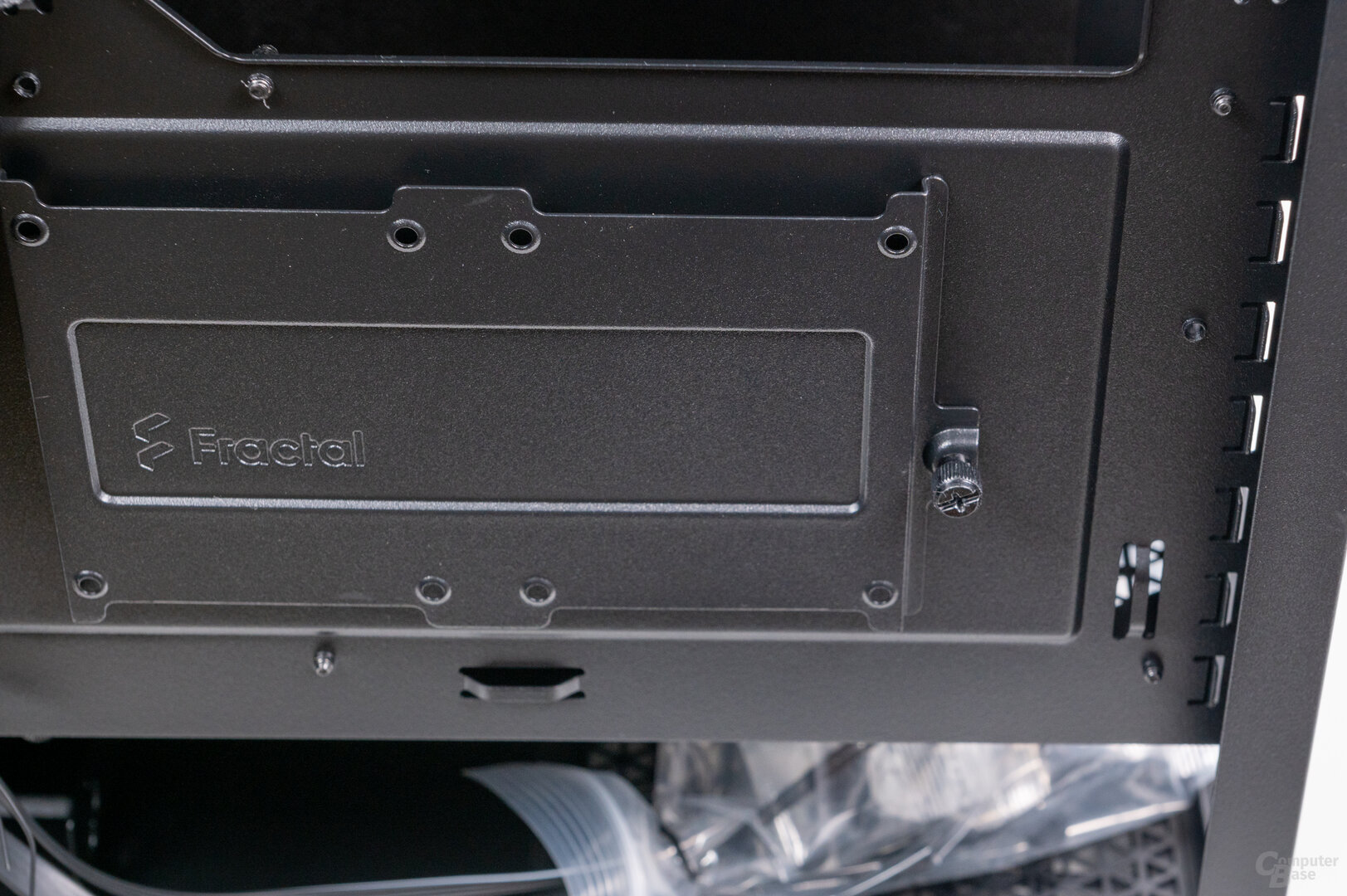 Fractal Design Pop im Test
Fractal Design Pop im Test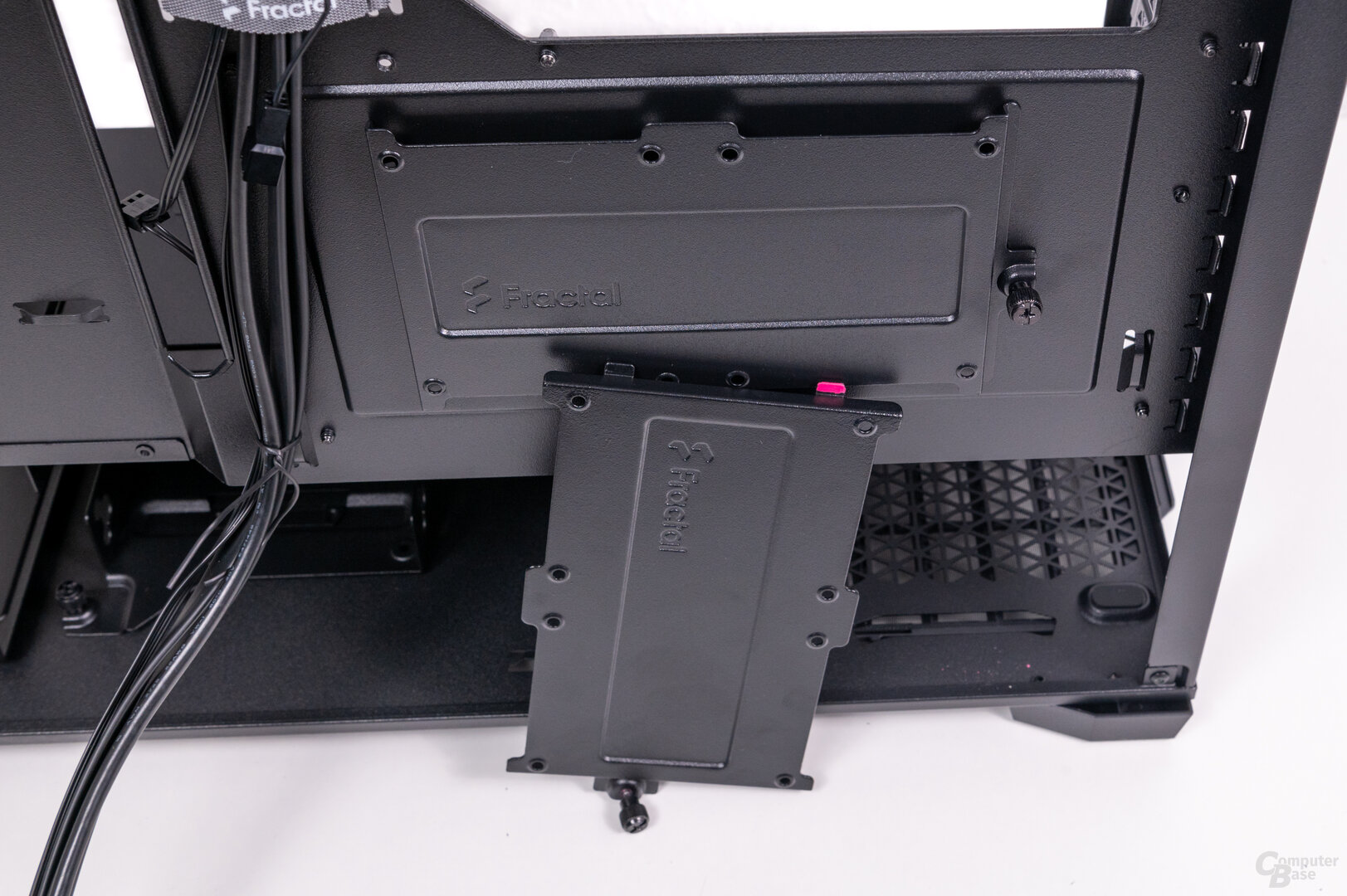 Fractal Design Pop in the test: warped SSD sheet metal was an isolated case
Fractal Design Pop in the test: warped SSD sheet metal was an isolated case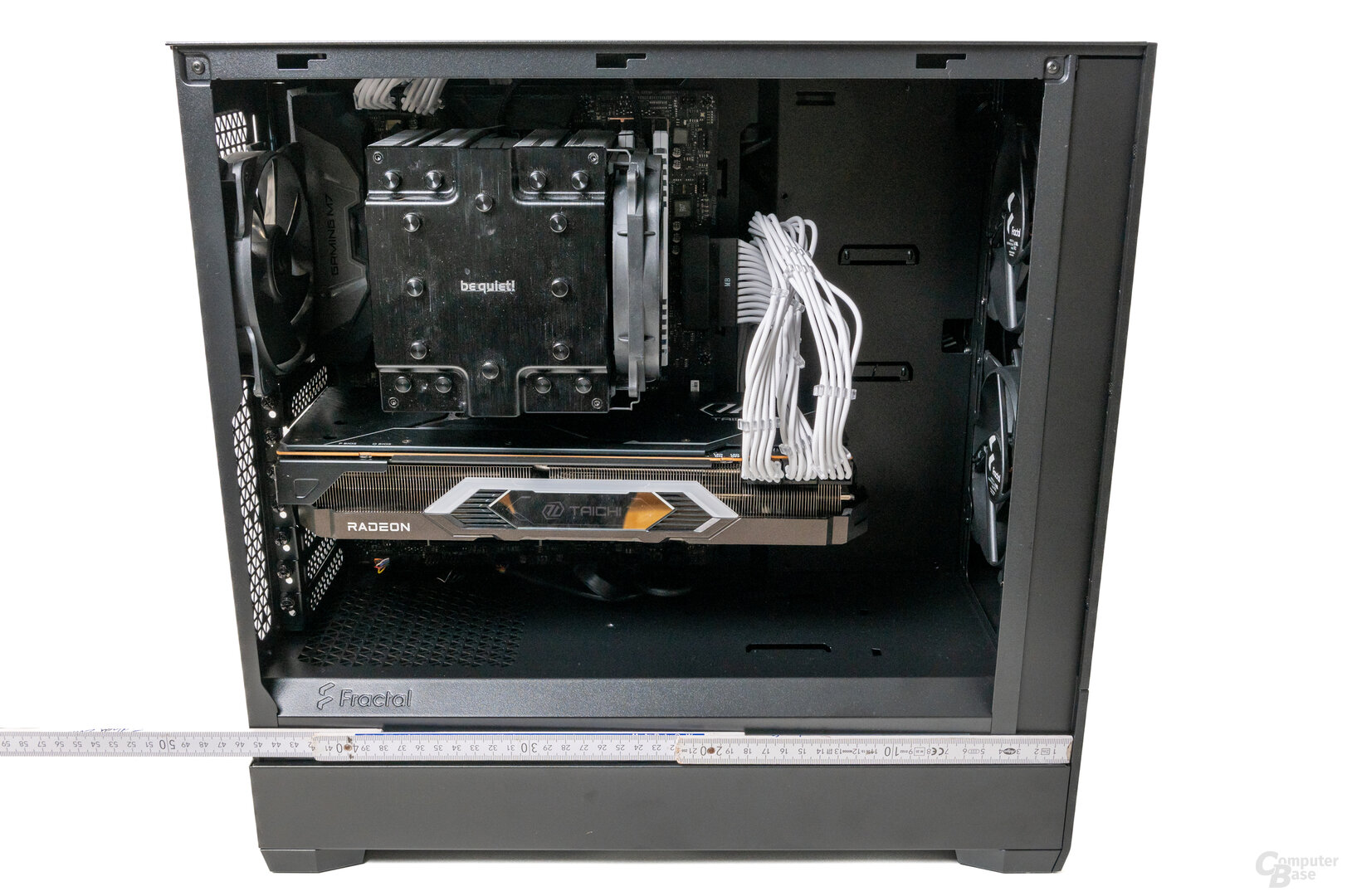 Testing Fractal Design Pop
Testing Fractal Design Pop Fractal Design Pop Review
Fractal Design Pop Review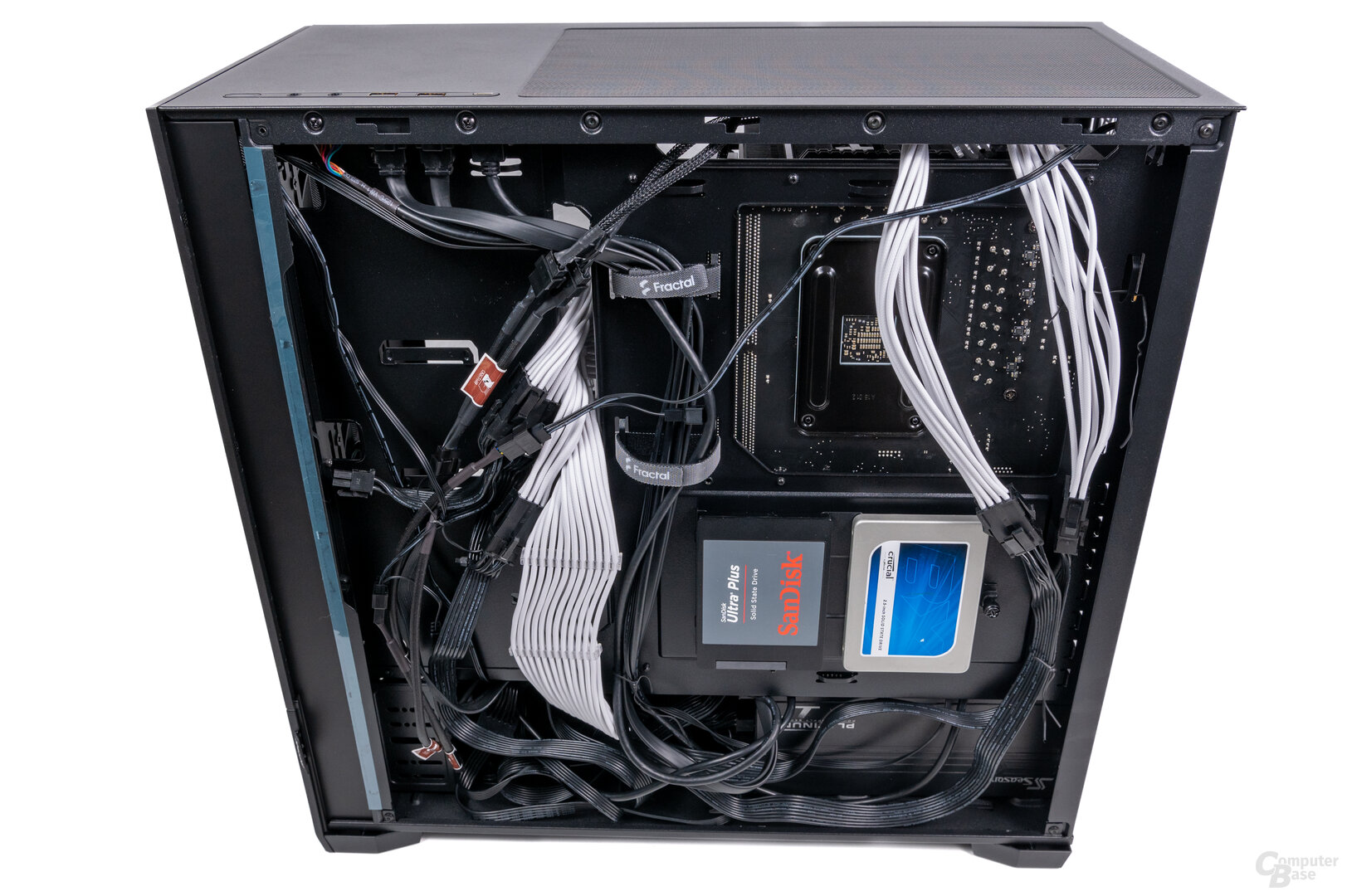 Fractal Design Pop in the test: space for cables is sufficient, but not inexhaustible
Fractal Design Pop in the test: space for cables is sufficient, but not inexhaustible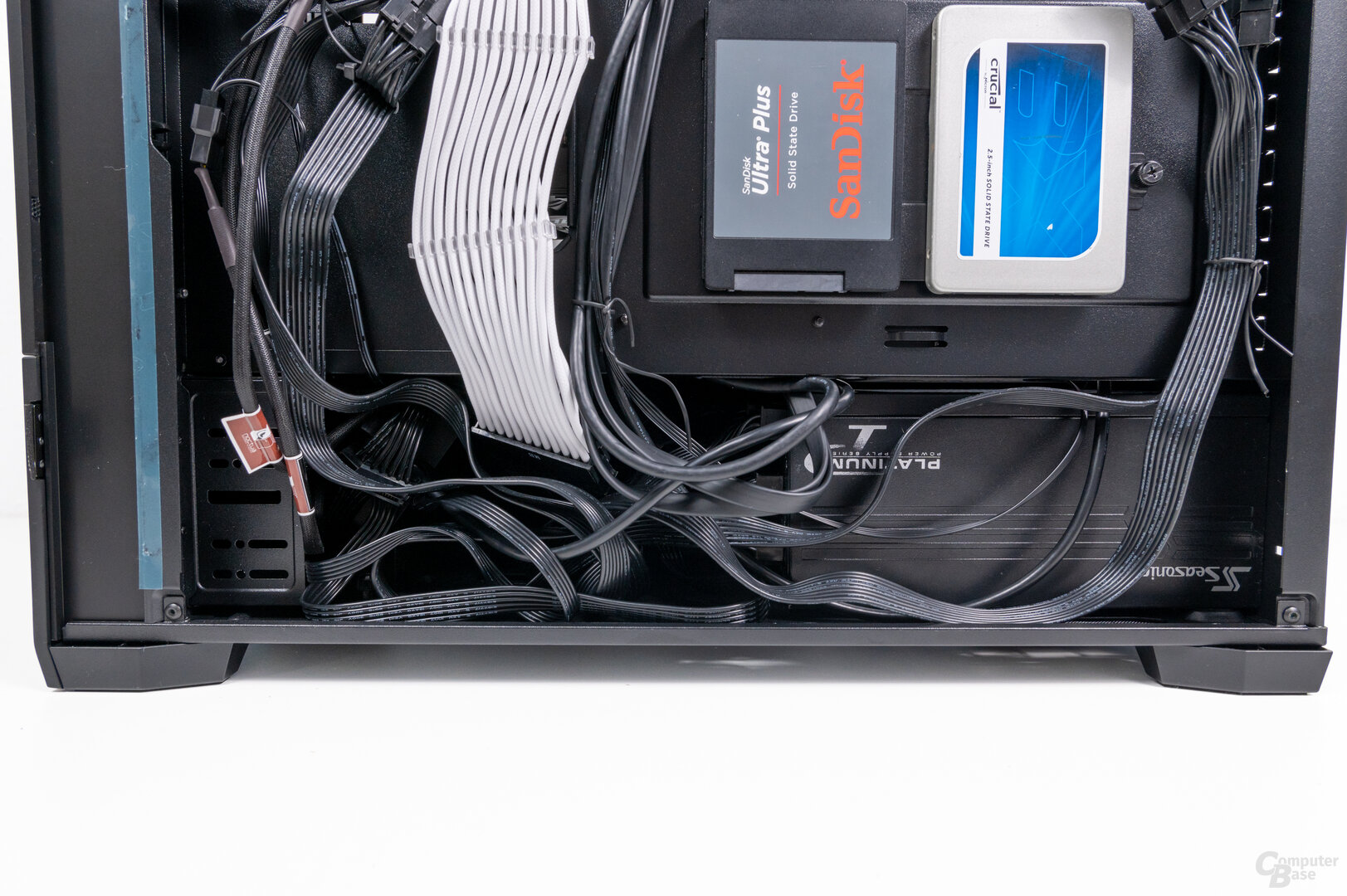 Fractal Design Pop in the test: space for cables is sufficient, but not inexhaustible
Fractal Design Pop in the test: space for cables is sufficient, but not inexhaustible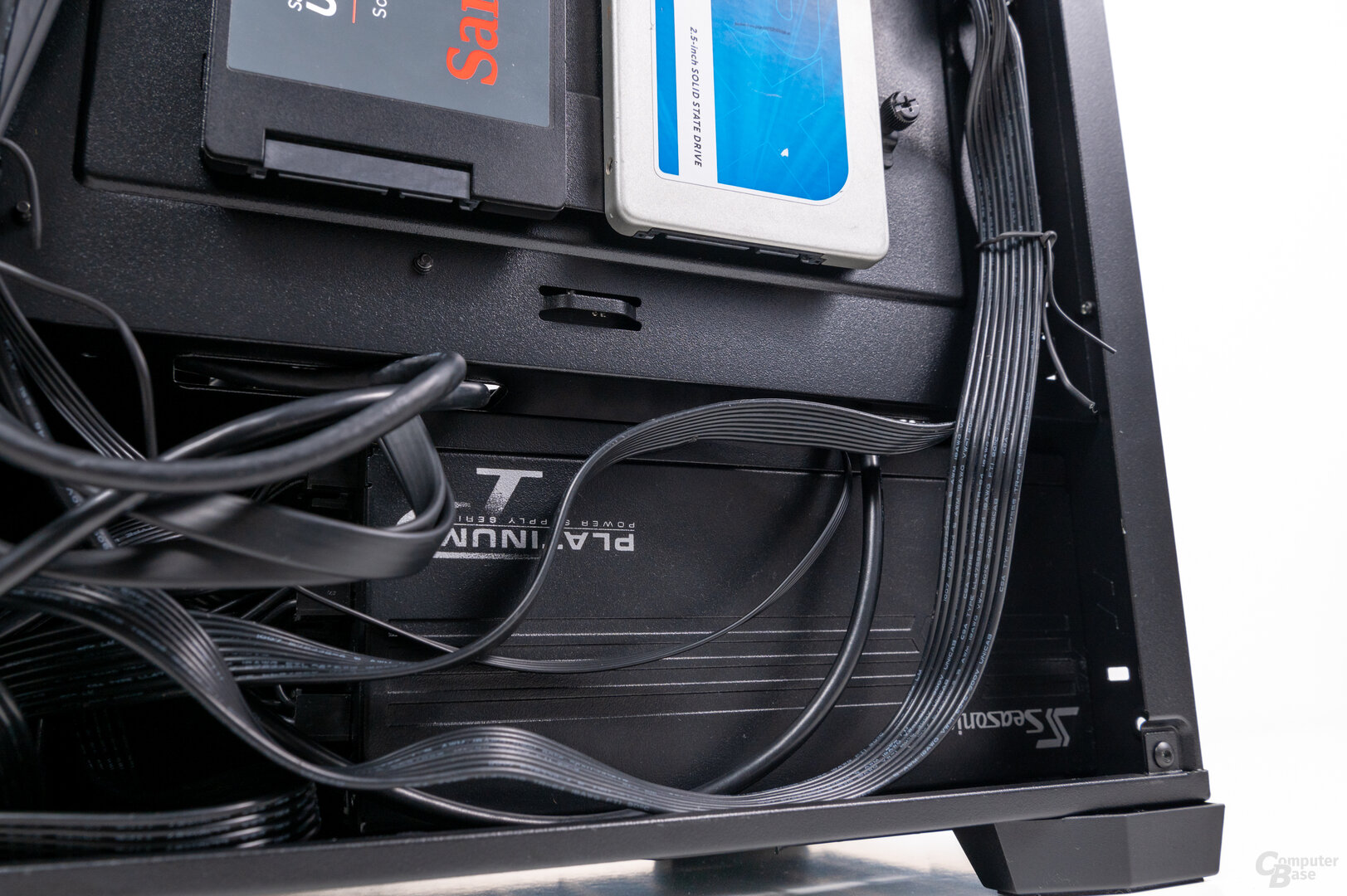 Fractal Design Pop in the test: space for cables is sufficient, but not inexhaustible
Fractal Design Pop in the test: space for cables is sufficient, but not inexhaustible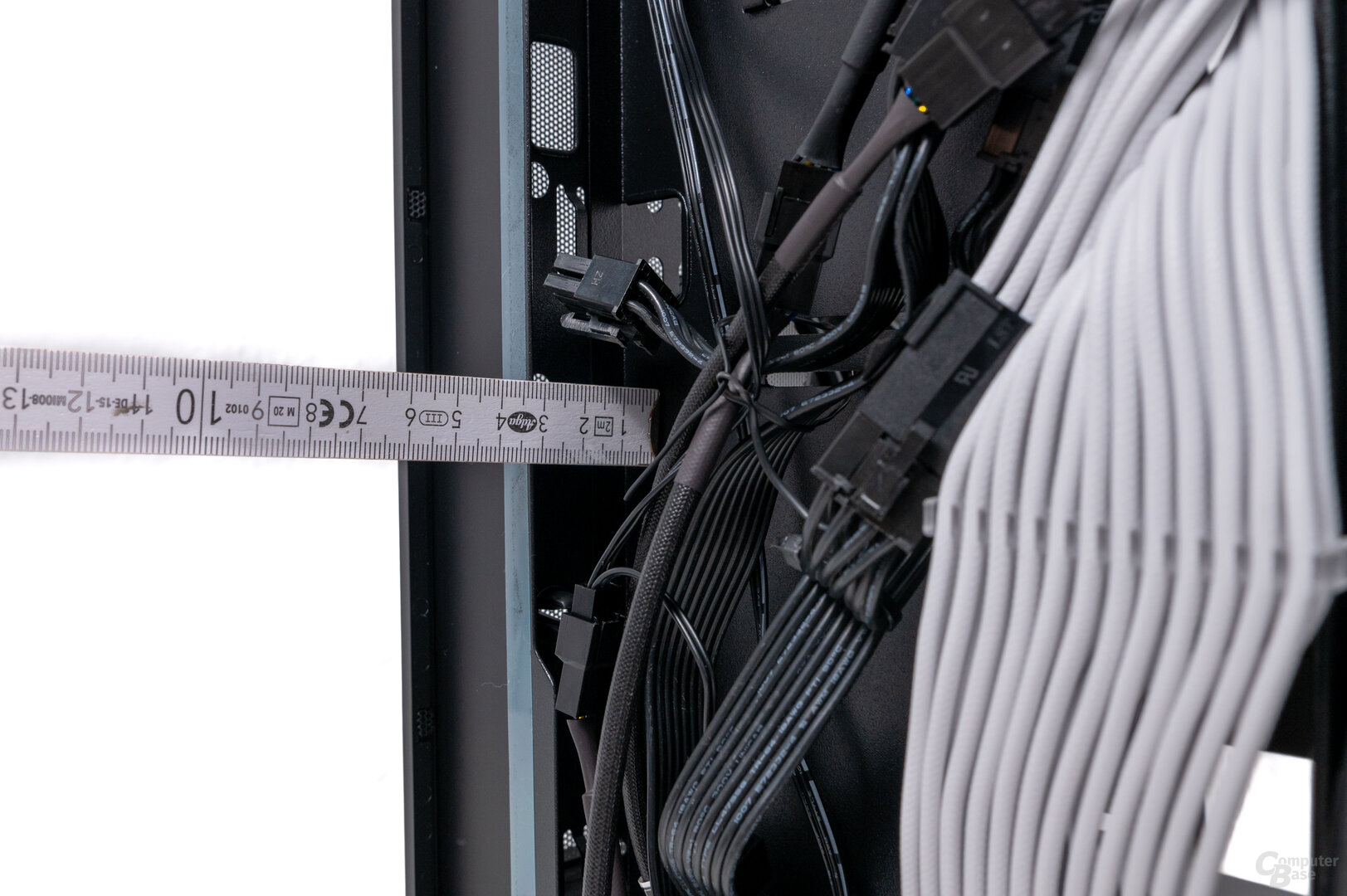 Fractal Design Pop in the test: space for cables is sufficient, but not inexhaustible
Fractal Design Pop in the test: space for cables is sufficient, but not inexhaustibleAnother problem turned out to be the SSD mount, which didn't want to go back into place after inserting the hard drives. The bracket seemed warped, so that the retaining screw constantly grabbed into the void. However, this phenomenon did not occur with the Pop Silent, which is also available. The optional SSD brackets could also be installed without any problems, so it can be assumed that this is an isolated case.
19 mm are available directly behind the mainboard for laying the cables. In the front area it is almost 32 mm. All in all, the space is sufficient, but quickly exhausted if a bevy of PCIe strands and other power cables are used.
Ventilation options
In addition to the additional possibility of installing two additional fans in the Pop Air's cover, the ventilation options in the Pop Air and Pop Silent are also different in the front. What both have in common, however, is the factory-installed fan (Aspect 12) in 120 mm format, for which Fractal Design also pays attention to the budget. The fans only use a 3-pin connection and do not offer any damping on the frame. Even the fans of the Pop Air RGB, which (as the name suggests) comes with RGB fans, only offer control via a 3-pin connector.
 Fractal Design Pop in the test: fans with only 3-pin connector Fractal Design Pop Review: Radiator Options
Fractal Design Pop in the test: fans with only 3-pin connector Fractal Design Pop Review: Radiator OptionsWith the Pop Air, the front fans can be attached either in front of or behind the mounting plate. This is not possible with the silent offshoot, or it would result in the fans blocking the side air supply. It is therefore important to ensure that the fans on the Pop Silent are always mounted in the direction of the hardware chamber. As a result, the maximum length of the graphics card on the Silent shrinks to 380 mm, while up to 405 mm is possible on the Air. In addition, the Pop Air offers the possibility of a push-pull radiator operation in the front.
Fractal Design Pop Fractal Design Focus 2 Mainboard format: ATX, Micro-ATX, Mini-ITX Chassis (L × W × H): 474 × 215 × 454 mm (46.22 liters)
Sound insulation variant 474 × 215 × 454 mm (46.22 liters)
Soundproofing, side window variant 474 × 215 × 454 mm (46.22 liters) 472 × 215 × 451 mm (45.77 liters) variant 472 × 215 × 451 mm (45.77 liters)
Side window material: plastic, steel variantplastic, steel, glass plastic, steel variantplastic, steel, glass Net weight: 7.30 kg variant7.20 kg variant6.80 kg 6.10 kg variant6.40 kg I/O ports/other: 2 × USB 3.0 (USB 3.2 Gen 1), HD audio variant 2 × USB 3.0 (USB 3.2 Gen 1), HD audio, RGB control 2 × USB 3.0 (USB 3.2 Gen 1), HD audio variant 2 × USB 3.0 (USB 3.2 Gen 1), HD -Audio, RGB control Bays: 2 × 5.25″ (external)
3 × 3.5″/2.5″ (internal)
4 × 2.5" (internal)
Aperture for opt. 5.25″ drive 2 × 3.5″ (internal)
6 × 2.5" (internal) expansion slots: 7 fans: front: 2 × 140/120 mm (2 × 120 mm included)
rear: 1 × 120 mm (1 × 120 mm included) variant front: 2 × 140/120 mm (2 × 120 mm included)
rear: 1 × 120 mm (1 × 120 mm included)
lid: 2 × 140/120 mm (optional) front: 2 × 140 mm or 3 × 120 mm (2 × 140 mm included)
rear: 1 × 120 mm
cover: 2 × 140 mm or 2 × 120 mm dust filter: front, power supply variant cover, front, power supply cover, front, base Compatibility: CPU cooler: 170 mm
GPU: 380mm – 405mm
PSU: 170mm CPU cooler: 170mm
GPU: 405mm
PSU: 250mm Price: – $70/$80 Page 1/2 Next Page
Test results, measured values and conclusion